#Vatican Museums’ Round Hall
Explore tagged Tumblr posts
Photo

Vatican Experts Restore Ancient Gilded Hercules Statue Struck by Lightning
Scaffolding in a niche of the Vatican Museums’ Round Hall conceal from view the work of restorers who are removing centuries of grime from the largest known bronze statue of the ancient world: the gilded Hercules Mastai Righetti.

For more than 150 years, the four-meter-tall (13-foot-tall) figure of the half-human Roman god of strength has stood in that niche, barely garnering notice among other antiquities because of the dark coating it had acquired.

But it was only after removing a layer of wax and other material from a 19th-century restoration that Vatican experts understood the statue's true splendor as one of the most significant gilded statues of its time. Museum-goers will be able to see its grandeur for themselves once the restoration is finished, which is expected in December.
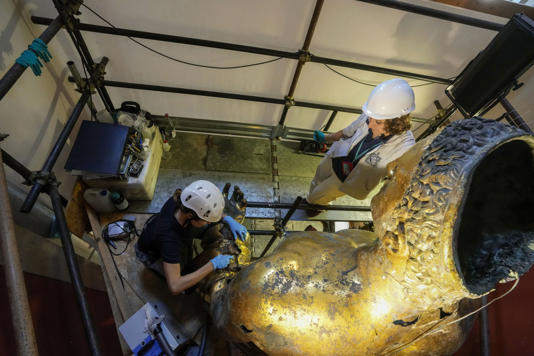
“The original gilding is exceptionally well-preserved, especially for the consistency and homogeneity,” Vatican Museum restorer Alice Baltera said.

The discovery of the colossal bronze statue in 1864 during work on a banker’s villa near Rome's Campo dei Fiori square made global headlines.
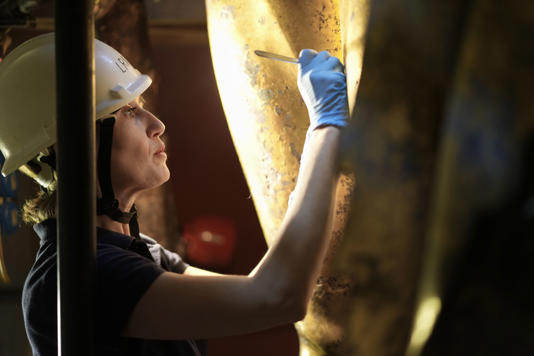
Visitors drawn to the ancient wonder at the time included Pope Pius IX, who later added the work to the papal collection. The statue depicting Hercules after he finished his labors had the last names of the pope — Mastai — and of the banker, Pietro Righetti, added to its title.
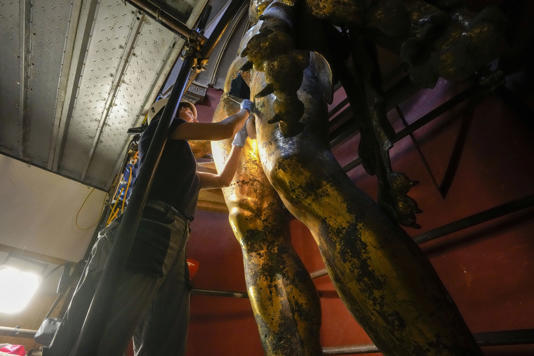
The inscription FCS accompanying the statue on a slab of travertine marble indicates it was struck by lightning, according to Claudia Valeri, curator of the Vatican Museums department of Greek and Roman antiquities. As a result, it was buried in a marble shrine according to Roman rites that saw lightning as an expression of divine forces.

FCS stands for "fulgur conditum summanium, a Latin phrase meaning “Here is buried a Summanian thunderbolt.” Summanus was the ancient Roman god of nocturnal thunder. The ancient Romans believed that not only was any object stricken imbued with divinity, but also the spot where it was hit and buried.

"It is said that sometimes being struck by lightning generates love but also eternity,’’ Vatican Museums archaeologist Giandomenico Spinola said. The Hercules Mastai Righetti “got his eternity … because having been struck by lightning, it was considered a sacred object, which preserved it until about 150 years ago.”
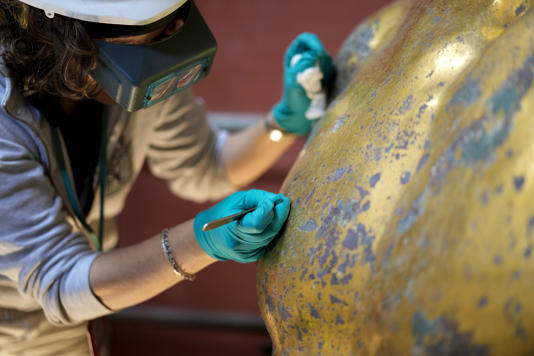
The burial protected the gilding, but also caused dirt to build up on the statue, which Baltera said is very delicate and painstaking to remove. “The only way is to work precisely with special magnifying glasses, removing all the small encrustations one by one,” she said.

The work to remove the wax and other materials that were applied during the 19th-century restoration is complete. Going forward, restorers plan to make fresh casts out of resin to replace the plaster patches that covered missing pieces, including on part of the nape of the neck and the pubis.

The most astonishing finding to emerge during the preliminary phase of the restoration was the skill with which the smelters fused mercury to gold, making the gilded surface more enduring.
“The history of this work is told by its gilding. … It is one of the most compact and solid gildings found to date,’’ said Ulderico Santamaria, a University of Tuscia professor who is head of the Vatican Museums' scientific research laboratory.
By Francesco Sportelli.


#Hercules#Gilded Hercules Mastai Righetti#Vatican Museums’ Round Hall#statue#gilded statue#ancient artifacts#archeology#archeolgst#history#history news#ancient history#ancient culture#ancient civilizations#ancient rome#roman history#roman empire#roman art#long reads#Vatican Experts Restore Ancient Gilded Hercules Statue Struck by Lightning
151 notes
·
View notes
Text

May 11, 2023: Vatican Museum restorer Alice Baltera works on the bronze Hercules statue, in the Round Hall of Vatican Museums. Work will continue until December to reveal the 4 meter (13 foot) tall Hercules, believed to have stood in ancient Rome's Pompey Theater, to its original golden sheen. The discovery of the gilded bronze in 1864 during work on a banker's villa near Piazza dei Fiori made global headlines. (AP Photo/Andrew Medichini)
18 notes
·
View notes
Text
Massive Hercules Statue Restored by Vatican After Lightning Strike
Greek Reporter By Alexander GaleMay 13, 2023 Experts at the Vatican are busy with restoration work on a massive gilded statue of Hercules that was struck by lighting thousands of years ago. For over 150 years, the statue, which stands four meters tall (13 foot), remained neglected in a niche of the Vatican Museums’ Round Hall. Covered in grime and wax, the largest known surviving bronze statue…
View On WordPress
0 notes
Text
Once a portrait of the Queen of England, the "Queen Use" portrait painter of Time Magazine exhibited in Shanghai
Original title: Once a portrait of the Queen of England, the "Queen Use" portrait painter of Time Magazine exhibited in Shanghai
The Italian painter Pietro Anigoni (1910-1988) was a realist master of the 20th century, and an "all-rounder" who combined classical and modern painting techniques. He is the "Queen" portrait painter of "Time", and his portrait works for Queen Elizabeth II are well received by the British public.
The new exhibition "Gazing-Realist Painter: Pietro Anigoni Exhibition" opened yesterday at the Shanghai Jiushi Art Museum features more than 50 sets of works, ranging from the ancient oily Tempera to the popular oil paint, Watercolor, then to sketches and sketches with personal characteristics, presents his comprehensive artistic career. The Paper has learned that this exhibition is also the second solo exhibition of a Western artist that Shanghai Jiushi Art Museum has ushered in after the Edward Munch exhibition last year.
Pietro Anigoni
Pietro Anigoni (1910-1988) is a famous Italian portrait painter. As a child, he moved with his family from Milan, Italy to Florence, and later received traditional art education and influence in Florence.
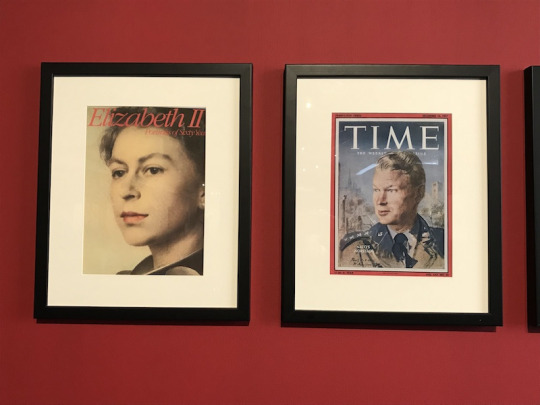
The exhibition hall, the cover of "Time" drawn by Anigoni
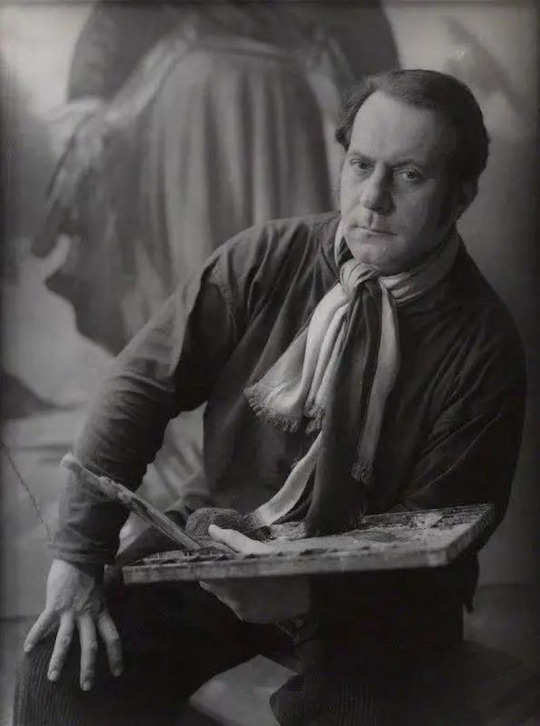
Pietro Anigoni
In 1927, the 17-year-old Pietro was admitted to the Florence Academy of Fine Arts, following the painter Felice Carina, the sculptor Giuseppe Griducciossi, the printmaker Celestino Celestini, etc. Study artistic creation. He inherited the fine traditions of the Florentine school since the Renaissance, used traditional techniques to express his familiar life, painted what he saw, painted what he loved, and did not follow the art wave of the early 20th century. The shape of his works is accurate, delicate and elegant, allowing him to work with ease in traditional and ancient painting techniques and creations. In 1932, the 22-year-old Pietro Anigoni held his first solo exhibition; in 1936, Anigoni received his first important mural project-the Convent of San Marco in the Medici. Since then, religious paintings, portraits and prints have become the main themes of his paintings
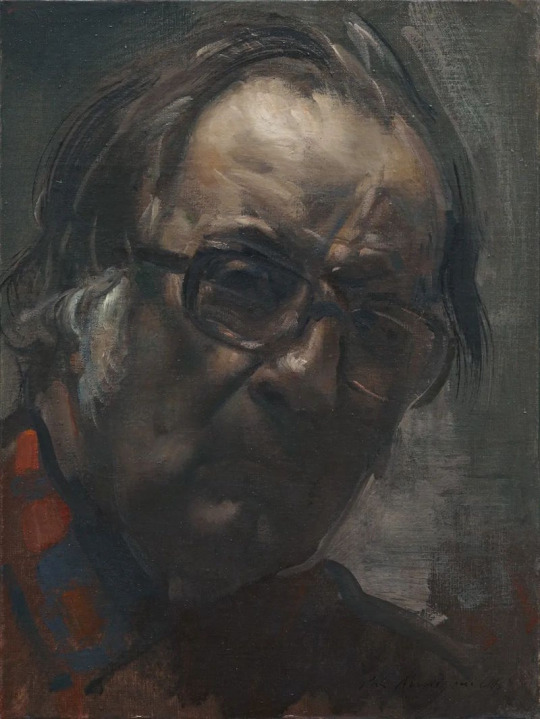
Anigoni "Self-Portrait"
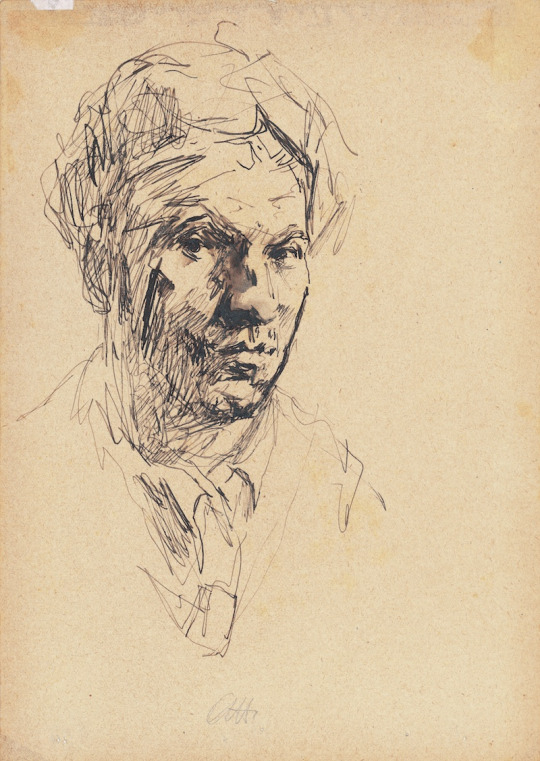
Pen sketch of Anigoni's Self-Portrait
Around the age of 40, he began to travel to Britain, America, Asia and Africa to engage in artistic creation. During the period, he painted portraits for many celebrities in the West; and after exhibiting his works at the Royal Academy of Art, Anigoni became famous in the UK, and after 1954 he was given the opportunity to paint a portrait of the young Queen Elizabeth II , And the final product has become a world-famous portrait painting, widely loved by the British and even the world. The curator Ma truly said, “In the 20th century, the most famous were Dali, Picasso, etc., and then Andy Warhol, etc.. And Anigoni was considered an outdated figure because he was in In the era of artistic innovation, he used the Renaissance way to create. But at the same time, he still combined many modern and contemporary elements in his paintings, and many of the elements and scenes in his pens are also modern. He can adhere to this realism spirit. There are not many artists at the same level.
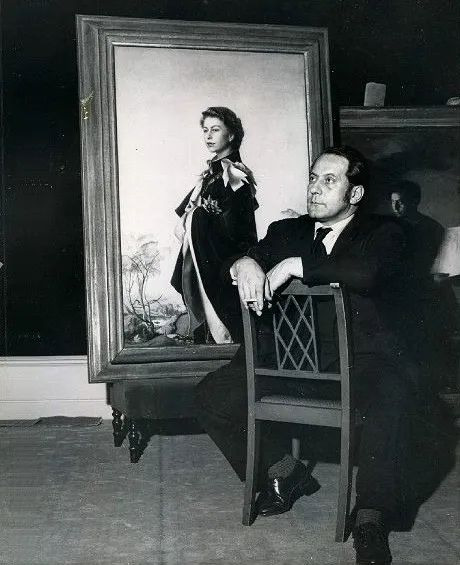
Anigoni in front of the newly completed "Statue of Queen Elizabeth II"
Today, Anigoni’s works can be seen in world-class art venues such as the Louvre in France and the Vatican Museums. He has also left many murals in churches and buildings in his hometown of Florence, and Florence is named after him. A square was opened to commemorate this outstanding artist. The "all-rounder" of realist painting The Paper learned that the exhibition "Gazing-Realist Pietro Anigoni Exhibition" hosted by the Shanghai Jiushi Art Museum exhibited 53 groups of works and documents of the Italian realist painter with 5 thematic clues The material presents his creative career.
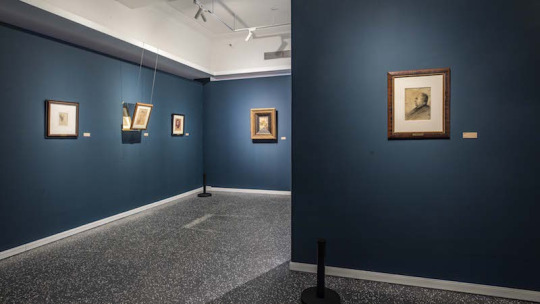
exhibition site

exhibition site
Anigoni left a large number of outstanding paintings in his creative career. Nothing is more accomplished than portrait works. With the development of image technology, the recording function of portrait works has been gradually replaced, but the expression of spiritual connotation has become increasingly rich, rich in layers and intriguing, and Anigoni's portrait works fully reflect these characteristics. The exhibition displays a large number of portraits of different themes drawn by Anigoni, including celebrity portraits and portraits of ordinary people. At the same time, his self-portrait works will also be presented at the beginning of the exhibition, and the creation time will also span from youth to old age. A self-examined work can feel the changes in his psychology and spirituality at various stages.

Anigoni, "Portrait of a Lady with a Pearl Necklace", 1958, oil on canvas
In the exhibition, the portrait work "Lady with a Pearl Necklace" is his very famous masterpiece. The facial expressions of the characters in the picture are soft and natural, and the details of the surrounding environment are rich and harmonious. It is worth mentioning that among his portrait works, the most famous is the official portrait painted for Queen Elizabeth II in 1955 (currently in the collection of the British royal family). This work that stood out from many participants was not only deeply loved by the Queen herself, but also conquered the critical British people. The portrait was printed as a stamp for international distribution, and won the first name in the top ten most popular portraits of queens held in the United Kingdom in 2006 on the 80th birthday of Queen Elizabeth II. This exhibition exhibited his draft portrait of Queen Elizabeth of England. The simple outline of the lines made the queen's charm and temperament emerge.

Left: "Portrait of Queen Elizabeth" Right: "Sketch of Portrait of Queen Elizabeth", works on paper 1956, works on the right in this exhibition
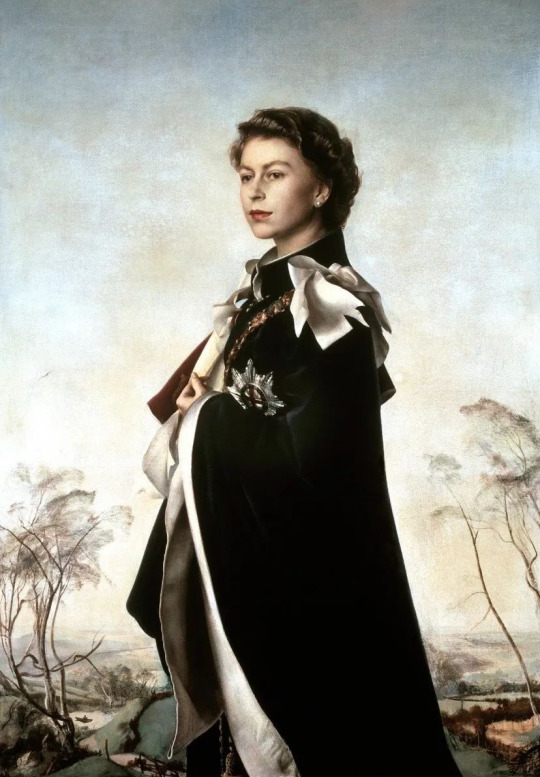
"Portrait of Queen Elizabeth"
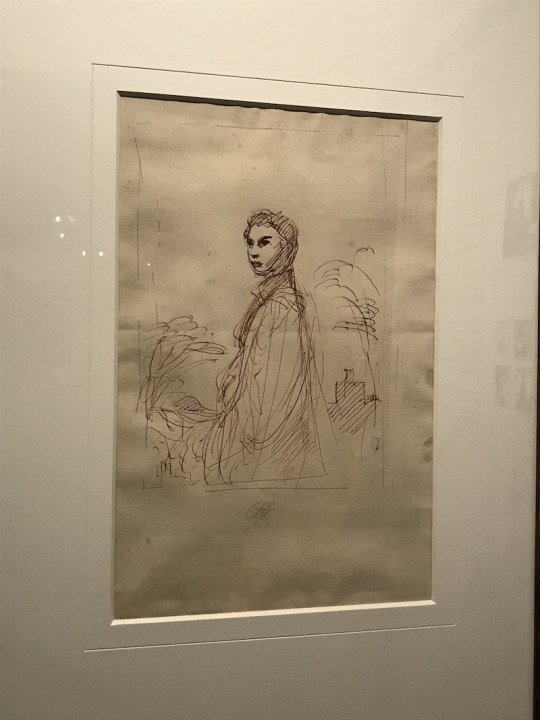
Exhibition site, draft portrait of Queen Elizabeth of the United Kingdom

At the exhibition hall, the exhibition board presents the portrait and stamps issued by Anigoni for Elizabeth II
In addition, the ancient and complicated oily Tempera painting technique is also one of the most outstanding parts of Anigoni's works. In the late 1920s and early 1930s, Anigoni studied oil-based Tempera techniques under the tutelage of Russian painter Nikolai Rockef. This technique can withstand the test of time and still maintain the original brilliance and characteristics of the original colors. Before the oil painting technique was widely used, it has been the most favorite creative technique of European painters. In the exhibition hall, the works "Self-Portrait", "The Hermit's Gathering-Anacoletti in the Desert" and "The Hermit in the Desert" were drawn by Anigoni with oily Tempera, with interlaced lines and brushstrokes and colors. The changes in light and shade all show his solid painting skills and superb creative techniques.
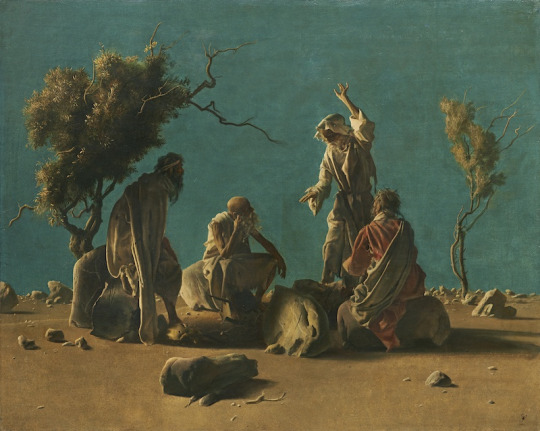
Anigoni "The Hermit's Gathering-Anacoletti in the Desert", 1947, Oily Tempera

Anigoni, "The Hermit in the Desert", 1947, oily tempera
In addition, there are many portraits and human sketches drawn by Anigoni in different periods in the exhibition hall, all showing Anigoni's solid modeling ability and realism skills, light, accurate, delicate, elegant and precise beauty. , In line with his oil paintings.
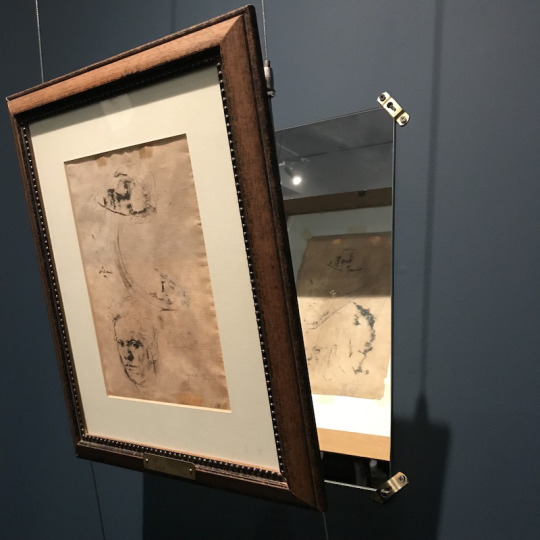
Exhibition site, Anigoni manuscript, portrait manuscript on the front and human foot manuscript on the back

Anigoni "Indian Sketch", Ink and Light Color, 1957
In Anigoni's sketches, he also used Chinese ink as the medium to draw many sketches such as "Indian Sketch", "Evening" and "Field". Ink and wash have also been used with ease in his brushwork, embodying his "all-round talent" exquisite skill in painting. Traditional painting in the present Regarding the meaning of insisting on traditional painting, Ma Zhenzhen said, “Many Italian critics feel that although Anigoni insists on an old creative concept, to a certain extent, his old style has affected a lot. Criticize contemporary contemporary artists. For example, Anigoni and Chirico are good friends, and Chirico is more famous for his'metaphysical' paintings. But Chirico was also influenced by Anigo in the creative process. Ni’s influence once returned to the creation of realism."

Anigoni "Portrait of Umberto Gunadano", oil on wood
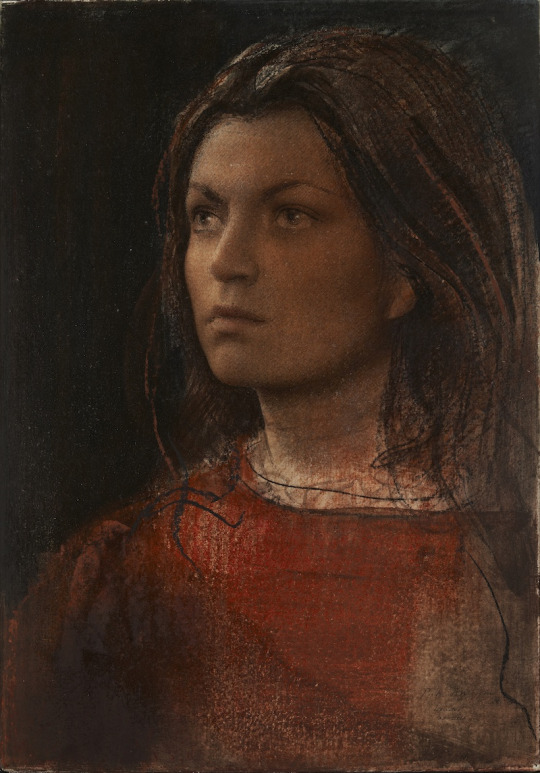
Anigoni "Yolai", date unknown, wood board mixed material
"Anigoni is more of a person who inherited the past and the future, and inherited the Florentine school of painting, and the portrait painting that influenced a group of people at that time. The era in which he lived has already appeared in the media, including weekly magazines, magazines, etc. At that time, "Times" often hired him to paint portraits of big figures, in order to influence society from the perspective of illustrations in the periodical." Ma Zhenzhen said. "Can these traditional art works created with different painting materials give us some different information in the current context?"
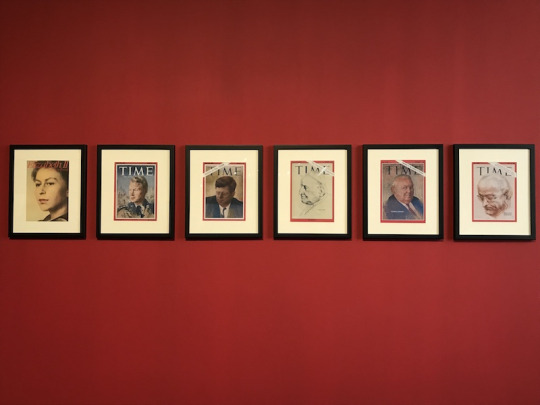
Exhibition site The cover of Time magazine drawn by Anigoni
Realism shows great vitality and influence with its most "ordinary" beauty, "pure" emotion and "real" depiction. In the exhibition hall, the audience can feel the charm and extensive influence of realistic painting through these works. This exhibition is also the second solo exhibition of a Western artist that Shanghai Jiushi Art Museum has ushered in since last year's Edward Munch exhibition. The curator stated, “Western masters’ exhibitions are the most attractive to the audience. However, considering the positioning of Jiushi Art Museum, we still hope that through different exhibitions on traditional art, we can pass on the art to the audience in a popular way. Knowledge. Compared with the previous Munch exhibition at Jiushi Art Museum and the Monet exhibition where Jiushi participated in the cooperation, Anigoni appears to have some starry bleakness, but he also left a strong one in the art world in a special way. The artist of the pen. Its special way is to respect the tradition, to continue the tradition, and to further expand and promote the tradition." The exhibition will be on until May 23.
8 notes
·
View notes
Text
Top 10 Things not to miss in St. Petersburg
To continue my birthday week, I have visited three countries. You’ve seen my blog for Finland and Estonia, now revel into the wonder of the old capital of Russia.
1. St. Isaac’s Cathedral
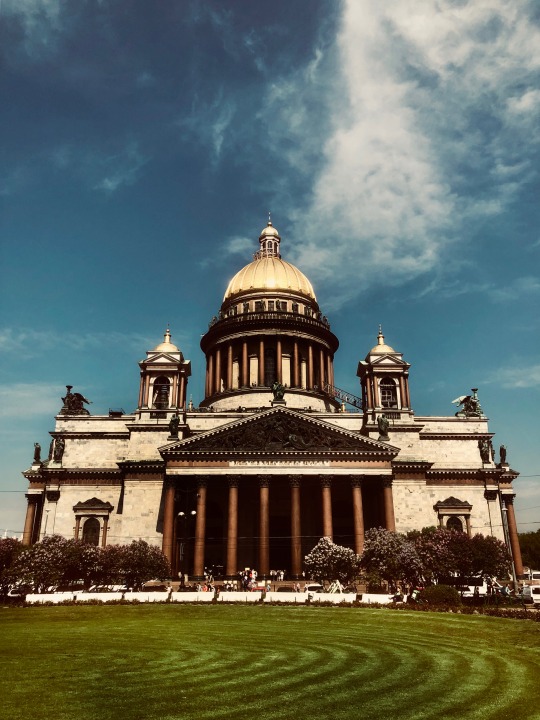
From the ferry port, you’ll be dropped off by the shuttle van at the grandiose St. Isaac’s Cathedral where you would feel dwarfed by the impressive 200-year old and largest Orthodox church in the city. See the retained traces of bombing up on the pillars during the Siege of Leningrad. You can skip the viewing platform from the dome as the skyline failed to mesmerise me.
2. Church of the Savior on Spilled Blood

I just feel so lucky to witness the very icon of St. Petersburg on my birthday!

Hands down, I think this is the most beautiful cathedral I have ever been to! The walls were not painted, if you look closely, it is covered in 7.500 square metres of mosaic- more than any other church in the world! At first, I thought it was named after the blood of Jesus Christ but boy I was wrong. It was built in 1881 in memory of Alexander II who was assassinated at Griboedov Canal. On the spot where his blood was shed, a shrine was erected and his son Alexander III dedicated the church to his father. The cathedral is full of life with the explosion of colours. I can feel the mosaics communicating with me through a gust of wind that brings chill to my spine.
3. Walk along the canals

For a full experience of the city, walking is the best way to do it and you’d be passing along the lovely canals. Dubbed as the Venice of the North, it boasts 342 bridges. One of my regrets was not able to do a boat cruise of the city. It would’ve been a different perspective seeing the city by the water.
4. The State Hermitage Museum (Winter Palace)

Welcome to the biggest museum in Russia and one of the most extensive collection of art and historical pieces in the world, about three million in total! Built between 1754 and 1762, the Baroque style architecture was initially the main residence of Russian Tsars.
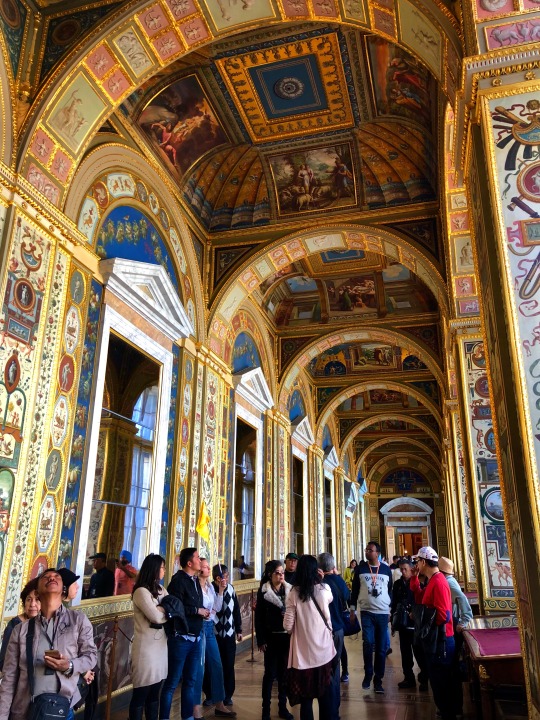
The works of art of the infamous Italian master painter Raphael are truly a neck breaker though I must say the ones on this hall are the exact copy of the Gallery in the Papal Palace in Vatican City.

Fast fact: the Hermitage Museum is one of the top 10 most visited museums in the world! The Hermitage's collections include works by da Vinci, Michelangelo, Raphael, Rembrandts, Cezanne, Manet, Monet, Van Gogh, Matisse, the list is endless! No wonder St. Petersburg is the cultural capital of Russia :D
5. Kazan Cathedral

Even on a gloomy day, corners of the city are still instagrammable. The cathedral houses an icon of Our Lady of Kazan which is believed to be miraculous. Fall in line and whisper your wish, who knows it may come true?
6. Experience the gay night life

I did not dare post I went gay bar crawling in St. Petersburg in fear of being persecuted. Russians are well known to be socially conservative and against homosexuality so am glad that the gay night scene is booming! We hopped from one bar to another starting at Unterwelt (really cool vibe, you have the option to chill and catch up with your friends and if you’re a bit tipsy, move your hips at the dance floor), Central Station and The Blue Oyster (more upbeat sounds, party all night!) The weekend was so good I was in denial I have a hangover the next morning LOL
7. Bibliothek Café
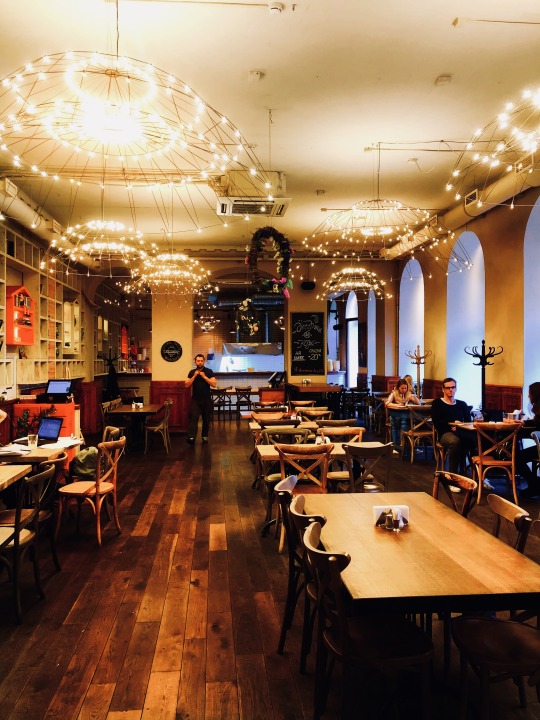
For chill spots I highly recommend this one, cosy ambience + slow paced life= perfection. However we had our food for take away, we had four pastries and two drinks for less than £5! How cray cray is that!? My friend and I never spent more than £25 (for both of us) for our meals! Don’t blame me though if your diet is ruined, every day will be cheat day.
8. Stroll along the Neva River and check out Peter and Paul Fortress

Good thing the best friend likes walking and here we are with the unexpected twinning! The Neva River connects the city to the Baltic Sea and played an important role in St. Petersburg’s history.

Built in 1703, the Peter and Paul Fortress was the foundation of the city. It was intended to be a defence structure but was later on turned to a military base, burial ground of Russian royalty to a cell for prisoners to a museum as of today. If you notice, the walls are of different colour. Originally painted red, Catherine the Great did not like the contrast against the blue waters as she gazes at it from the Winter Palace hence stones were imported, being too expensive, workers were instructed to cover parts parallel to the palace. A queen can also be tricked huh?
9. Admire the Blue Mosque
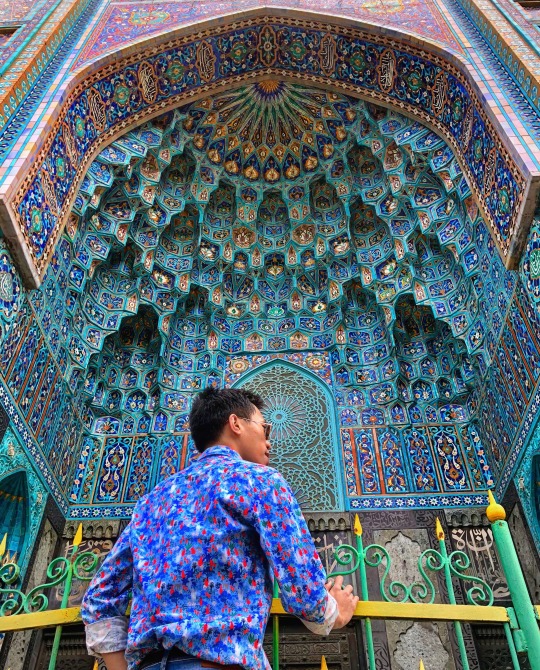
I asked our guide where the blue mosque was and she had no clue, I debated I always see it in Instagram so it must be popular in the city, my friend even argued it is in Istanbul. I found out (good thing I’m clever) the official name of it is the St. Petersburg Mosque. What’s blue and also a mosque? The St. Petersburg Mosque.
10. Watch a heart melting ballet performance

It was a true privilege to witness a grand performance at the legendary Mariinsky Theatre on my birthday. The experience was definitely one for the books!

I have never watched ballet in my whole life and seeing the Swan Lake before me was really overwhelming. Almost brought tears to my eyes! They say that no one does ballet like the Russians do and now I know why. The beauty, elegance, discipline, precision and presentation was the absolute finest! Standing ovation for me!
Please check out my vid of the amazing birthday week I had in three cities, Helsinki, Tallinn and St. Petersburg
youtube
So now you ask me, “how did you go to St. Petersburg without a Russian visa?” Simple. St. Peter Ferry Line offers a 72-hour visa free visit to St. Petersburg if you book a ferry cruise from Helsinki/Tallinn. For 1039 Euros for two pax, you get round trip tickets, hotel accommodation & breakfast and transport from SPB ferry terminal to the city centre. How brilliant is that? Although I have booked my own taxi from our hotel to the port (we were just too tired to walk back to St. Isaac’s Cathedral with my heavy luggage), if you’re on a budget, don’t worry, Uber just charged me £3 for the 20-min. drive haha!
During my trip, I learned Russians are very cold, they don’t look you in the eye nor acknowledges you with a smile even those who work in the hospitality industry. Later on I found out it is actually part of their culture. I would like to be a part of this resting bitch face society. Smiling is frowned upon and bursting into laughter makes you look stupid. It seems weird and awkward in certain situations especially for a jolly person like me but the more I immerse myself, I realised Russians are respectful, they are helpful, they are kind, they are humble. So don’t be afraid to visit St. Petersburg, it may be boastful and grand in appearance but it is one city you will surely love. Befriend a person who never smile and make it a trip of a lifetime.
#st. petersburg#russia#travel#travelgram#pinoy#world traveller#top 10#must see#sights#on a budget#on a shoestring
2 notes
·
View notes
Text
After returning to our hotel to retrieve our luggage and change into our raincoats, we caught a taxi and headed to the train station where we purchased tickets to Rome. Even though the Florence train station is a bit more hectic than the others we had been in so far, we still had a flawless experience.
The ride from Firenze S. M. Novella to Roma Termini is just 1 ½ hours. Don’t book a ticket for the 3-hour trip! That train makes lots of local stops, which is why it takes twice as long. There are two train stations in Rome, Roma Tiburtina and Roma Termini. Termini is the main train station, and where we landed for our final leg of the trip. We had an Airbnb reserved in a neighborhood centrally located so we could walk to most of the sights we wanted to see. Our host was kind enough to give us very specific directions whether we arrived via taxi, bus, or subway. We took the subway which was very easy, fast, clean, and cheap. It was only a couple euros for the ticket, which stopped about 4 blocks from our flat. The metro ticket we purchased was good for 100 minutes, and apparently we could have used it on a bus as well if we needed to.
Tip: Keep your belongings secured; we heard that there are lots of pick-pocketers in Rome, but personally didn’t experience any problems.
While our first Airbnb in Bologna was a sleek, modern, Ikea inspired space, this flat in Rome was charming, warm, and the perfect mix of old Italy with updates. It was on the second floor, so we did have to haul our suitcases up a staircase, after rolling them 4 blocks, but the space was large and comfortable with a living room, kitchen, large bedroom, and bathroom. Our host left us wine, pastries, milk, and juice, and gave us a thorough overview of Rome with a map and list of attractions. She was adorable.

The veranda on the back side of our flat
The Whirlwind Tour
It was 5:30 in the afternoon before we hit the streets, knowing we only had that evening, plus the next day to explore. I knew that it wasn’t going to be enough time to see everything, but we made the most of it. We started with a walk to the Pantheon from our flat, which took about 15 minutes. At this point, we were used to navigating the twisting and turning old sidewalks through Italy, using a combination of Google Maps on my phone and a paper map. I figured the Pantheon was going to be just another old building, so I was not prepared for the magnificence of it as we rounded the corner and saw it from across the square. There is something just jaw dropping about seeing a big, solid structure that has been standing there for over 1,800 years! It’s the oldest building I’ve ever seen, and while it doesn’t boast intricate architecture or beautiful paintings, it is just as amazing as the other places we saw in Italy.

The Pantheon, Rome
We had dinner reservations at a wonderful little restaurant called La Francescana about a 30 minute walk from the Pantheon (I used the Fork app to make the reservations). On our walk there, as we crossed back over the river we passed by (but didn’t go in) the Museo delle Anime del Purgatorio, which is a beautiful gothic church, and the massive Corte Suprema di Cassazionebuilding. This building is incredible in that it looks both imposing and beautifully artistic all at once. La Francescana was fabulous and another perfect Italian meal. Again, I went with the house wine and wasn’t disappointed – it was wonderful. We started with the mussels which, we both agreed, were hands down the best we’ve ever had. I’m afraid that I’ll be disappointed in mussels next time I have them here in the States. They were so fresh, not at all gritty, and the texture was perfect. And the broth? Oh my goodness, I couldn’t stop sopping it up with the crusty bread. Chip had carbonara and immediately fell in love with the dish. I had Amatriciana which is a red sauce with little bits of pork cheek in it. It was fabulous. As usual, the pasta was cooked to perfection and we stuffed ourselves to the point of skipping dessert.
On our way back to the flat, we decided to stop for a cocktail at a swanky, trendy little place Fuoco where I had a delicious bourbon cocktail that had some freshly ground espresso beans on top of a light foam. Sounds weird, but it was so good, and the perfect after-dinner drink. We ended up chatting for a while with an American couple who had just flown in that day for vacation then sauntered back to our Airbnb for bed. But, of course, not before stopping at the lovely little wine bar next door to our building for one last drink. The wine bar, Kiarotti, was fabulous and we ended up going back a couple more times before departing. In fact, we bought 6 bottles of wine the next night and they carefully packed it up for us to take home.
Last Day
Unfortunately, for our last day in Italy, the weather wasn’t great, but we had good rain coats so we made the most of it. It was really bad early in the day, and we were seriously thinking we were not going to be able to see much, but thankfully it let up after lunch. We had a quick bite to eat at a café (more sandwiches and spritz!) then headed out to see Trevi Fountain, The Spanish Steps, and the Vatican. We were smart this time and made reservations for the Vatican, so we knew we would be able to get in at a specific time. Our reservations weren’t until the afternoon, so we started out toward the Spanish Steps. The steps are in the Piazza di Spagna and climb to a church at the top called Trinitá dei Monti. Piazza di Sagna is super busy with lots of people everywhere, including the scammers who try to get you to buy a rose (do not take a rose!). There is a beautiful baroque fountain in the center of the piazza that looks like a sunken ship, called Fontana della Barcaccia. The Steps really are lovely and we climbed to the top so we could see the view.
One of the problems with all day exploring in a city is where to find a rest room when you need one. By the time we got to the Spanish Steps it had been about 30 minutes since we stopped for lunch, and I didn’t use the ladies room at the café, so I really needed to go at this point. I ended up going inside the large McDonalds here and, wow. This is the biggest McD’s I have ever been in. We didn’t eat here, I just needed a ladies room which became a 20 minute excursion. The place is huge and it took awhile to find the bathrooms which were upstairs in the back. Then I had to wait in line forever! It was nuts. But it was clean and modern, so there’s that.
Trevi Fountain, Rome
From here we headed towards Trevi Fountain. This fountain is spectacular! It’s very difficult to get a decent picture here because there are so many people and it is so crowded. I do wish I had whipped out the selfie stick to get a picture of us here, but I didn’t. We did, however, toss a coin into the fountain for good luck. At this point, we needed to find a taxi to get us to the Vatican in time for our pre-paid entrance, so we made our way to a street and easily found a taxi driver who got us to the Vatican within 15 minutes.

The Vatican
We were dropped off in what appears to be the front of the Vatican, where there are lots of people trying to sell tickets and skip the line passes. We ignored all of them and tried to find the entrance, however it took forever for us to figure out how to get in and where the entrance was. It turns out, we were dropped off on the exact opposite side of where we needed to be. Another 15 minutes of walking and we were finally in the correct queue for pre-paid tickets. You have to go through security, which is a bit chaotic, then you must exchange your prepaid voucher (or email code) for the actual tickets. Then you just follow the herd through the halls, stopping to admire the tapestries, sculptures, and art along the way as you make your way to the Sistine Chapel. This self-guided tour takes approximately 45 minutes or longer depending on how much time you spend admiring the works of art.
The Vatican Museums are full of amazing works of art, and the Sistine chapel is indeed beautiful, but it was so crowded, and the guards seemed intimidating, it was more exhausting to me than enjoyable. However, this was the last day on our vacation, so maybe I was just tired from all of the touring we had done up to this point. We joked about “exit through the gift shop” as we were making our way toward the exit, and there are several gift shops, just in case you didn’t buy something in the first two, you can get something in the next few! We bought a couple books and a decorative collectors plate.

For our final night in Rome, we wanted to go back to Francescana’s since we had such a wonderful meal, but they were booked for the evening, as were the next 3 restaurants we stopped at. Tip: make dinner reservations! We did find a wonderful little place called Pupina where we enjoyed a final meal of fresh pasta. Again, typical good service, good wine, and outstanding food for a very fair price. Dining in Italy is truly special!
Departing Rome
One problem with staying in an Airbnb versus a hotel, is getting a taxi early in the morning to get you to the airport. Luckily, our flat was across the street from a Le Meridien hotel, and the concierge was super friendly and got us a taxi in less than 10 minutes, even though we were not guests at the hotel. The ride from our area of Rome to the airport took at least 30 minutes, so make sure you plan enough time to get there. There are two airports, Leonardo da Vinci at Fiumicino , and Ciampino. We departed from Leonardo da Vinci, which is a beautiful airport – clean with plenty of places to dine and shop. Make sure you know which terminal you are departing from (it depends on your airline). We departed on United, and checking our bags was fairly easy, as was going through security. We had plenty of time, arriving early, so we enjoyed a bite to eat and did some last minute shopping. The food in the airport is typical Italian food, with fresh sandwiches and pizzas as well as good coffee. We had no problems boarding our flight, and were soon on our way back to the U.S. after an absolutely lovely time in Italy.

Click here to go back to Italy Part : Introduction & Travel Tips
Italy Vacation Part 5: Rome After returning to our hotel to retrieve our luggage and change into our raincoats, we caught a taxi and headed to the train station where we purchased tickets to Rome.
#Airbnb#Dining in Rome#Italy#Pantheon#Rome#Spanish Steps#traveling by train#Trevi Fountain#vacation#Vatican#Vatican Museums
0 notes
Text
The Metropolitan Museum staged the two most popular exhibitions of 2018.

View of “Heavenly Bodies: Fashion and the Catholic Imagination” in the Medieval Europe Gallery. Image © The Metropolitan Museum of Art.
The numbers for 2018 are in, and the Metropolitan Museum of Art has come out on top as the home of the year’s most visited art exhibition for the first time since 2001. Not only did the Met take home the gold, according to The Art Newspaper, but it seized silver as well, with its fashion exhibition “Heavenly Bodies: Fashion and the Catholic Imagination” being 2018’s most popular show and “Michelangelo: Divine Draftsman and Designer” being the second most popular, worldwide. The five best attended art exhibitions of 2018 were:
“Heavenly Bodies,” which was seen by a total of roughly 1.43 million people, with another 230,000 visitors seeing its satellite continuation at the Met’s Cloisters location in upper Manhattan, for a grand total of 1,659,647 visitors, or 10,919 per day. “Heavenly Bodies” also set an all-time attendance record for a show at the Met, toppling King Tutankhamun’s 1978 blockbuster.
“Michelangelo: Divine Draftsman and Designer,” the second-best attended art exhibition of 2018, was seen by 702,516 visitors, or 7,893 per day.
The Smithsonian American Art Museum in Washington D.C.’s immersive, Instagram-friendly installation by Korean-born artist Do Ho Suh lost to the Met’s Michelangelo by a nose, with 7,853 visitors per day. Even though Suh suffered from 40 less visitors per day, his exhibition had more total visitors overall, at 1,123,000, because the show was open nearly twice as long as Michelangelo at the Met.
The Shanghai Museum took home both fourth and fifth place, and was ultimately home to five of the ten most popular art exhibitions of 2018. Its show of masterpieces loaned from London’s Tate Britain wrangled 7,126 visitors per day, totaling 617,926.
In fifth place was the Shanghai Museum’s “Bronze Vessels” show, with 6,933 visitors per day, though the total here was only 54,473, as “Bronze Vessels” was only open for 9 days.
Paris’s Fondation Louis Vuitton and Melbourne’s NGV International both saw a boost from the Museum of Modern Art’s decision to send works from its collection abroad as it completes a major renovation; their MoMA-supported shows drew 5,171 and 3,312 visitors per day, respectively. MoMA itself scored 3,993 visitors per day with its retrospective of conceptual art great Adrian Piper, though that wasn’t its most popular exhibit. It was another fashion-driven show that scored highest for MoMA in 2018, with “Items: Is Fashion Modern?” bringing 4,987 visitors per day; still not enough to land the museum a spot in the top 20.
The year-end round up also tallied 2018’s most visited museums. Numbers one through four all retained their standings from the previous year. The Musée du Louvre was number one with 10.2 million visitors, an all-time high for the 226-year-old French institution, an attendance bump attributed in part to Beyoncé and Jay-Z shooting a music video in its hallowed halls. Beijing’s National Museum of China remained at second place, with 8.6 million. The Met remained at third with 6.9 million, and the Vatican Museums complex came in fourth, with 6.7 million people making the pilgrimage. The biggest shakeup occurred in the race for fifth place, with Tate Modern besting the British Museum by less than 50,000 visitors to become the U.K.’s most-visited art museum, with 5,868,562 visitors.
from Artsy News
0 notes
Text
Day 15: May 26 - Rome
Well�� we did wake up at 7:30, however, we didn’t get out the door until AFTER 8 AM, which was our cutoff time. Already behind schedule, we realized we had to get bus tickets in order to get to the Vatican in a timely matter, otherwise it’d be an hour walk to the Vatican. Unsure that we could even get bus ticket on the actual bus, we wandered around Termini Station, trying to find out how to buy metro/bus/tram tickets, until I had to ask someone who directed us towards a newspaper station by the entrance. We bought two tickets each, and then ran to our bus which was packed (though nothing like Paris’s metro or entry onto Amalfi’s bus). However, the bus left around 8:30, which was the time that we had initially planned on BEING at the Vatican. The bus ride took about 20-30 minutes to arrive because of all the stops.


When we arrived at Vatican City, the line to go into Saint Peter’s Basilica had wrapped around the courtyard already. We got in line and as Katie held the spot, I made sure that we were standing in the right line. The line was for security actually, as it was free to enter without a tour. The line moved fast, (except it didn’t, it seemed when we were standing in the sun) and soon we were walking into the huge basilica building. It was the single most beautiful and most ornate building I’d seen by far. Marble and gold decorated EVERYTHING. The black marble and bronze canopy was a sight to behold and the huge statues brushed with gold were something to remember, definitely the Church displaying how much “importance” and wealth they had. However I felt myself disgusted at how much efforts and luxuries that the Church had while the rest of the people were suffering.




However, I did happen to enjoy Michelangelo's La Pietà that was close to the entrance of St. Peter's. The statue was sitting on its pedestal behind bulletproof glass (as I happened to listen in on a tour group's guide), which was not the case when my parents visited. Because of the popularity of the statue and a SERIOUS influx of tour groups, it was pretty hard to get a picture of the statue without people in the way, very reminiscent of another piece of work in Paris (the Mona Lisa, anyone?). I also found myself a little disappointed at the size of the statue, expecting it to be a little bigger than the normal person sized figures. Regardless, I was able to fight my way through the crowd momentarily and snap a picture but I was soon overwhelmed by even MORE tour groups that seemed to linger too long, or go immediately to the statue after entering the basilica.


After exiting the physical representation of the Church's ego, we asked a man by the audioguides desk about where to get tickets to the Vatican Museums. He told us where to go using a map taped to his desk that had a yellow path that highlighted where to go, but then told us to actually come back around 3-3:30 because there would be less of a line at that time (less than an hour's wait). Seeing this as a very attractive option, we left the Basilica around 11:15 or so. As we exited, we also saw that the line for the security check had nearly doubled and was around the second fountain in the courtyard (which was quite a distance, as those who have been to Vatican City know).
With about 4-ish hours to kill before the Museums, we chose to go to see the Borghese Gallery. We took a bus there and hiked up a couple of hills to get to the gallery, able to get tickets around 11:45. Because we actually had to reserve tickets in advance (but didn't), we got lucky and were able to enter and stay until 1 PM. However, the Gallery seemed a bit dull as compared to the richness that we had just seen (i.e. The Basilica) and what we had seen previously (i.e. British Museum/Van Gogh Museum). We left the Gallery around 12:45-ish and decided to find some lunch.
We stopped by a small sandwich shop where the men inside appeared to be a father and son combo, and they had an attractive deal where we could get pasta, water, and an expresso shot for €7. Katie got some big, round hollow noodles in what was reminiscent of mac 'n cheese while I got some spaghetti with tuna that I was talked into by by the father and son, as to not offend them and not listen to their glowing review of the tuna spaghetti. As appetizing as it sounds... I can't say it was bad, but it definitely was something I've never thought of or tried before.

Once we finished, we went back and sat in the Borghese Gardens for a bit. We just sat and enjoyed not walking for once (hard marble floors look great but are bot very comfortable for the feet and legs). When the clock finally reached 2:15, we head out from the Gardens (avoiding two guys dressed as Roman gladiators for photos and mainly money) back to Vatican City.
We made our way by bus to the Vatican Museums, constantly refusing people offering “tours to skip the line”. We were disappointed to find that there still was a line and no shade for us, however, the line only took about 30 minutes (which is not bad considering how long we could’ve been standing there), but it felt longer because of the hot sun beating down on us. Fortunately, Katie, knowing that she burns easily, had brought a thin cardigan with her to protect her shoulders, so there was no risk of pink shoulders later.
Once we went through security, which took less than three minutes to go through, we bought our tickets (fortunately, the Vatican respects ALL students, not just EU citizens… looking at you museums of Rome and Naples) and went in. I wish I could say that I enjoyed the Vatican Museums, but I think I spent more time worrying about trying to get through the crowds to see the actual paintings than actually looking at the paintings. I felt like going through the Vatican Museums was a mix between my experience at the Forbidden City in China and my experience at Versailles in France. At the Forbidden City, we were rushed through so fast that we couldn’t really stop to enjoy any of the sights and the attraction itself. At Versailles, it was so tightly packed with tourists and tour groups, no one could really move around to look at anything and one could only proceed through the rooms (or move at all) if a tour group moved on to the next room. The Vatican Museums was both packed and seemed rushed to me. At times, I didn’t want to linger around certain rooms but had to because of how many people there were. Other times, I wanted to stay longer but Katie and I had found a pocket in which there were no tour groups and we wanted to maintain that pocket. With that logic, we had to keep between tour group timings in order to get a chance to really look at anything. We did get to enjoy some of Raphael’s murals, most notably the City of Athens, which was interesting to me because I had always seen pictures of it, but never realized that it was over two doors.





Katie and I got an audio guide to listen to at the beginning, which helped, especially in the Sistine Chapel, when there’s so MUCH to look at and not very easily accessible information. The Sistine Chapel was as impressive as the pictures made it out to be, Michelangelo’s ceiling impressive and definitely full of artistic talent. The sheer height of the walls and ceiling added to its impressiveness. However, personally, I was struggling to focus on how amazing the murals were when there was a constant worry about the people around me. There must’ve been AT LEAST ten to fifteen different tour groups in there, plus people like Katie and I, who voted not to go into a tour group. And this was around 4 or 5 PM, a few hours before closing time. I felt like the room was spinning a little for me, and I had to focus on doing some basic breathing exercises as to not just bolt out of that room and scream. Fortunately, I didn’t and once Katie and I had our fill of making our necks hurt, we exited the Sistine Chapel, the rooms now much more bearable since everyone was concerned with the Chapel.

We exited the Museums after walking through a few more halls displaying the Church’s wealth and then returned to our hostel to rest for a while. We planned to go our for dinner for our last night in Rome. Using the magic of Yelp, we found a pizza place close by called Pinsere that was both cheap and had a great rating. Around 7 or so, we headed out from the hostel and found the place pretty easily since it was about a block away. The three men inside greeted us with a chorus of heavily accented English and each wielded a set of two spatulas to cut and move pizza around. The pizzas before them had been premade, yet the looked amazing. Each pizza was roughly the size of a standard piece of printer paper. Katie ordered an onion and spicy pepper pizza and I got a four cheese pizza with baby mushrooms. Katie and I both agreed that this was one of the best pizza places and one of the best meals we’d had in Italy so far. (Though, I later realized that my pizza had blue cheese on it, which is one of the cheeses that I happen to not like. I still ate every bite of that pizza because it was SOOO good).



After the pizza, we sought out Gelateria La Romana, a place that the man from the hostel had recommended to us while showing us a map of Rome. When first walking into the place, we were immediately captured by the line of coolers close to the front advertising ice cream sandwiches, tarts, and beautifully decorated cakes. After we realized that we had to pay the cashier and get a ticket/receipt (and that we could not just consume the desserts in the coolers with just our eyes), we moved on to decide what type of gelato we wanted. We each got a cup of our own (I got two flavors, black cherry and hazelnut) and sat down in the little shop to enjoy our spoils. Just from the first bite, Katie and I agreed that this place served THE BEST gelato of our lives, even better than our local gelato shop in St. Petersburg, Paciugo (which had held its spot as the best gelato for a long time). While I quickly consumed mine, Katie savored her gelato, and we watched as the line for La Romana increased substantially since we had gotten our gelato, almost going out the door of the place.


Satisfied from having an amazing meal that night, and from sheer exhaustion from walking, we returned to our hostel, ready for the sweet embrace of sleep. We turned in around 10 or 11 and dreamt of getting more gelato in the morning before we left Rome.
1 note
·
View note
Text
Roaming in Rome
Rather more tired this morning but we were ready to walk away from the hotel at 10 am for the 20 minute walk to the Coliseum. Before that, Ally, Paula and Marie had been shopping for sandwich items having collected fresh fruit, cake and bottles of water yesterday. Tables in the dining area were commissioned for making 27 packed lunches of sandwiches, fruit etc. and players collected their own set of items to carry. In 2014 we had the excellent services of Francesco, an experienced tour guide and we recruited him again for a long day. Real life showed itself at the start. The result of the Swedish terrorist attacks last week were road blocks and significantly extended security. At the 10.30 am meeting time there simply wasn’t time to process the long queues at Security and ticket collection lines and it was decided that Francesco would cover a huge percentage of his speech by walking round the outside and then along the outside of the Forum. Talking to the group later they were satisfied they had experienced enough although a possibility to enter does exist. That would mean taking Francesco’s advice and reporting to the ticket office at 8.45 am tomorrow when he suggests the lines would be minimal and we do have a ‘free’ morning. The option put to the group was an extra two hours sleep. A minority have opted for the Coliseum with the others looking to sleep more which in view of the unrelenting itinerary looks wise. The group then walked past the Victor Emmanuel II monument again and had it explained before heading for the Trevi fountain and Pantheon. A short extra walk to Spagna Metro station where the Spanish Steps were seen and it was a few minutes ride to the Metro station which serves Vatican City. It was explained that the Vatican is a separate state and we left Italy for a while. Quite a long process to collect the ordered tickets, pay the balance and collect headphones which meant the Guide commentary could be heard quite a distance from Francesco. He led us through the Coach museum which proved of interest, showing the development of Papal Coaches up to ‘Popemobiles’; then through the vast halls of paintings, tapestries and sculptures. Of note were the maps made towards 500 years ago which are incredibly accurate when compared with satellite images. That led into a few minutes in the Sistine Chapel before emerging to the front of St Peter’s, the biggest church in the world. As a church service was due the Guide wasn’t allowed to take us in. A few who wanted to were able to look around whilst the others rested on the steps outside. Francesco then left us and we walked through the famous area in front of St Peter’s so often seen on TV. Back to the Metro and a journey back to the hotel. That left an hour to change and refresh into ‘smart meal’ clothes before the one minute walk to our booked table at a nearby restaurant recommended by the hotel we are staying in. The meal had a wide and varied menu and people were able to have a free choice – although it did resemble a “Pizza Party” along the tables. Richard and James Boyd were released for the visit of the Vatican. The senior group at Bracciano had not played badminton yesterday and met up at the restaurant meal. This renewed their friendship from 2014. Their group were desperate for the two to go to their training session this evening. In the interests of the ‘special relationship’ between Darlington and Bracciano it seemed good to send them as ambassadors. At the time of writing I have no news of that, but they should be back in the hotel whilst trains run. A clue for you may be if this blog is posted by Richard…
6 notes
·
View notes
Video
youtube
The Round Hall at the Vatican Museum. One of the best Mosaic Floors I have ever seen. Amazing!!!
4K Sala Rotonda Room or Round Hall @ Vatican Museum - Rome Italy - Eric ...
#The Round Hall at the Vatican Museum. One of the best Mosaic Floors I have ever seen. Amazing!!!#eric#clark#travel#videos#rome#italy#vatican#museum#round#hall#rotonda#sala#mosaic#floor
0 notes
Text
Coronavirus Live Updates: Cruise Ship With Infected Passengers and Crew to Dock in California

Whether the edict can be enforced remains to be seen. But European leaders will be watching the effects of Italy’s tactics and wonder whether this is a harbinger of things to come. At the Vatican on Sunday, for the first time, Pope Francis did not appear in person for Sunday Prayer but live-streamed his blessing.The outbreak has now sickened more than 107,200 people worldwide, according to official counts.In the United States, which has more than 400 cases and 19 deaths, President Trump had told reporters that he was not inclined to let 21 people who tested positive for the virus on the Grand Princess cruise ship stranded off the coast of California onto American soil.His reasoning: “I like the numbers being where they are.” But as of Sunday the ship was scheduled to dock in Oakland.In New York, Gov. Andrew M. Cuomo declared a state of emergency on Saturday as the number of coronavirus cases in the state rose to 89, including a Queens driver who worked for Uber and two unexplained positive tests of people 200 miles to the north.The outbreak has reached into the halls of power in other countries like Italy, where the leader of the Democratic Party said he had contracted the virus. In Iran, one of the country’s vice presidents, 23 members of Parliament, the deputy health minister and several other senior officials were among thousands of confirmed cases. The dead include a senior adviser to the country’s supreme leader and Fatemeh Rahbar, a member of Parliament, state news media reported.Mr. Trump, an admitted germophobe, said he was not worried about the outbreak getting closer to the White House after the news that a person who had attended a conservative conference outside Washington where he and Vice President Mike Pence spoke last week had tested positive.“I’m not concerned at all,” the president told reporters at his Mar-a-Lago estate in Florida, where he was spending the weekend. He said he had no plans to curtail his campaign rallies even though other large gatherings of people are being canceled across the country.“We’re going to have tremendous rallies,” he said.The U.S. Army has suspended travel to and from Italy and South Korea for all soldiers and family members because of the coronavirus outbreak until May 6. The order, which affects 4,500 soldiers and family members, came a day after it was announced that an American sailor deployed to Naples, Italy, had tested positive for the virus.In Iran, which has been hit the hardest in the Middle East, with more than 6,000 confirmed cases, the health ministry announced 49 more deaths on Sunday, bringing the total to 149. Tehran also said it was suspending all flights to Europe indefinitely, state media reported.
The Grand Princess, turned away from San Francisco, will dock in Oakland.
The Grand Princess cruise ship that has been held off the coast of California after 21 people onboard tested positive for the coronavirus was on its way to dock on Monday at the Port of Oakland, the vessel’s operator said.Passengers on the ship who require “acute medical treatment and hospitalization” will disembark first and be taken to facilities in California, according to the boat’s operator, Princess Cruises. California has emerged as an early center for the virus in the United States, with about 100 cases in all.Other guests onboard who are California residents will be quarantined in a federal center in the state, the statement late Saturday said. Non-Californians will be taken to federal facilities in other states, the company said.Gov. Brian Kemp of Georgia said in a statement “34 Georgians and additional American citizens from the eastern United States who are currently on the Grand Princess cruise ship off the California coast will be securely transferred to Dobbins Air Reserve Base in Marietta” for testing and be quarantined if necessary.The ship is holding more than 3,500 passengers and crew members; 19 crew members have tested positive for the virus, Vice President Mike Pence said on Friday. They will be quarantined aboard the vessel. Several other passengers who were on the ship on earlier legs of the voyage have also tested positive.Princess Cruises initially said on Saturday that the ship would dock in Oakland on Sunday. It later amended that statement after what it called a change in planning by the Centers for Disease Control and Prevention.Concern over the Grand Princess, which traveled to Hawaii before returning to California, began last week after the death of a 71-year-old man who had been on a previous leg of the cruise, a round trip from San Francisco to Mexico last month.Princess Cruises also runs the Diamond Princess, the coronavirus-stricken cruise ship that was quarantined off the coast of Japan last month. The virus circulated among the more than 3,700 crew members and passengers who were waiting out a two-week isolation period in the port city of Yokohama, with more than 700 cases identified from that ship.On Saturday, Japan said that a man from Hong Kong who was a passenger on the Diamond Princess had died of the coronavirus on Friday in Japan, the eighth death associated with the ship.
Italy orders a lockdown affecting 16 million people.
Italy’s government had said it would take the extraordinary step of locking down entire sections of the country’s north, restricting movement for a quarter of the population in a sweeping effort to fight the coronavirus.“We are facing an emergency, a national emergency,” Prime Minister Giuseppe Conte said in announcing the government decree in a news conference after 2 a.m.The move is tantamount to sacrificing the Italian economy in the short term to save it from the ravages of the virus in the long term. The measures will turn stretches of Italy’s wealthy north — including the economic and cultural capital of Milan and landmark tourist destinations such as Venice — into quarantined red zones until at least April 3.They will prevent the free movement of roughly 16 million people.Funerals and cultural events are banned under the measures. The decree requires that people keep a distance of at least one meter from one another at sporting events, bars, churches and supermarkets.The Italian outbreak — the worst outside Asia — has inflicted serious damage on one of Europe’s most fragile economies and prompted the closing of Italy’s schools. The country’s cases more than doubled last week from about 2,500 infections on Wednesday to more than 5,800 on Saturday. Deaths rose to 233.Amid the backdrop of the growing restrictions to contain the virus, Pope Francis on Sunday for the first time live-streamed his Sunday Prayer, an event that usually draws thousands to St. Peter’s Square.Henrietta Kampp and Olivia Studd, students from Denmark, said they had come to St. Peter’s Square — where the prayer was shown, in addition to being available online — because few many people were there.“Had it been crowded, we wouldn’t have come close,” Ms. Kampp said.The Vatican also said on Sunday that it, like Italy, would close its museums and pontifical villas.On “Fox News Sunday,” Dr. Anthony Fauci, director of the National Institute of Allergy and Infectious Diseases, said that he doubted the United States would have to impose measures as “draconian” as Italy has done to halt the spread of coronavirus, but he added, “Anything is possible.”“If we continue to get cases like this, particularly at the community level, there will be what we call ‘mitigation,’ where we have to essentially do social distancing, keep people out of crowded places, take a look at seriousness, do you really need to travel, those kinds of things,” he said.In other parts of Europe: Germany said on Sunday that the number of coronavirus cases had risen to 939; Switzerland had 281 confirmed infections; and Britain’s health department said that two people with the virus had died and that the number of cases in the country had jumped to 273 by Sunday. The Finnish armed forces announced that troop exercises planned for Mar 9-19 with Norway would be scrapped because of the outbreak.
An attendee at a conference where Trump and Pence spoke tests positive.
A person who attended a conservative conference where President Trump and Vice President Mike Pence spoke last week has tested positive for the coronavirus, according to the conference’s host.The American Conservative Union, which hosts the annual Conservative Political Action Conference outside Washington, said the attendee was exposed to the virus before the four-day event and tested positive for it on Saturday.“This attendee had no interaction with the president or the vice president and never attended the events in the main hall,” the group said in a statement. “The Trump administration is aware of the situation, and we will continue regular communication with all appropriate government officials.”The attendee has been quarantined in New Jersey, the statement said.Stephanie Grisham, the White House press secretary, said in a statement that there was “no indication that either President Trump or Vice President Pence met with or were in close proximity to the attendee.”Others who spoke at the conference included Secretary of State Mike Pompeo, Transportation Secretary Elaine Chao and Labor Secretary Eugene Scalia. Also in attendance were Jared Kushner, the president’s son-in-law and adviser, and Donald Trump Jr., the president’s eldest son.
What everyone wants to know: What’s the fatality rate?
Understanding how deadly the coronavirus can be is a central factor for governments to gauge how drastic their countermeasures should be and for individuals to adjust their own anxiety.But the real rate is elusive.The World Health Organization’s estimate last week of 3.4 percent seemed to shock experts, some of whom said that 1 percent was more realistic.There are several reasons the right number remains unclear.Not enough people have been tested. Incomplete testing means the reported death rates probably skew high; if many more cases were detected, the rates would fall. Until last week, people in the United States were tested only if they had traveled to China or had contact with other ill people. Many infected people in the country were not being counted.The number of coronavirus deaths could be incomplete. Cases where infected people died without being tested might be missed. And people can be infected for a while before becoming sick enough to be at risk of death — which can throw off a short-term calculation.The rate won’t be the same everywhere. Experts say differences in populations and health systems can raise or lower the death rate by country. For example, there is strong evidence that older people are at a higher risk of dying, so countries with more older people may end up with a higher rate.
The death toll rises after a quarantine center collapses in China.
Ten people died in the collapse of a hotel that was being used as a coronavirus quarantine facility in Quanzhou, a city in China’s southeastern Fujian Province, the government said on Sunday.Government officials said that about 70 people had been trapped inside the building when it collapsed on Saturday. Thirty-eight people had been rescued as of Sunday afternoon and taken to the hospital. Officials said 23 people were still trapped insideThe People’s Daily, a Chinese state-run newspaper, said that the hotel had collapsed during renovations and that the owner of the building was under police custody.The five-story hotel, which opened in summer 2018, was designated a quarantine center for people who have been in close contact with suspected coronavirus patients. Of those trapped inside the hotel when it collapsed, 58 had been placed under quarantine, officials said.
Saudi Arabia cordons off Shiite towns to contain the outbreak.
Saudi Arabia cut off access on Sunday to Shiite Muslim towns and villages in the east of the kingdom, cordoning off an area in Qatif Governorate in an attempt to contain the outbreak. All 11 of the country’s confirmed coronavirus cases have occurred in Qatif, the center of Saudi Arabia’s Shiite population.The government’s announcement did not appear to affect any Sunni towns or villages. Shiites were left wondering whether they would be able to go to work or to travel outside the area.The move was cast as a public health measure, but it also touched on delicate political matters for the kingdom, where the Shiite minority has long faced discrimination. In recent days, the group has come under greater scrutiny because the first coronavirus cases occurred in people who had returned from Iran, the site of the biggest outbreak of the virus in the Middle East.Flights and trade links have been cut since 2016 between Saudi Arabia and Iran, the kingdom’s regional enemy and rival. But Saudis have continued to visit Iran in secret by transiting through other countries, abetted by the Iranian authorities, who refrain from stamping their passports.The kingdom assailed Iran over the practice last week, accusing it of contributing to the coronavirus threat in Saudi Arabia. The government asked Saudi citizens who had been to Iran in secret in the previous 14 days to turn themselves in.Residents said that towns and villages in the municipality of Qatif, on the kingdom’s eastern coast north of the headquarters of Saudi Aramco, were surrounded by security vehicles on Sunday. The government announced that entry and exit into the area was “temporarily” suspended, the official Saudi Press Agency reported, though it said that residents would be allowed to return to their homes.All government departments and private institutions would also suspend operations, other than essential businesses including gas stations and pharmacies, the announcement said. Schools in the area were closed.
The Trump administration sends mixed messages on who can get a test kit.
President Trump said that “anyone who wants a test can get a test” on Friday as he toured the Atlanta headquarters of the Centers for Disease Control and Prevention. But Alex M. Azar II, the health and human services secretary, later clarified Mr. Trump’s promise and defended his phrasing.Mr. Azar said that only those who had gone through a doctor or medical professional could be approved for a test. Mr. Trump’s phrasing, he said, reflected a recent shift in federal regulations.The C.D.C. lifted all restrictions on testing for the coronavirus on Wednesday. Instead of federal regulators and those shipping the test kits, doctors and professional public health officials now decide who can be tested.Mr. Azar said Mr. Trump had used “shorthand” to make that point.Dr. Stephen Hahn, the F.D.A. commissioner, said that more than 5,860 samples had been tested. In addition, more than 1.1 million tests have been shipped to private health labs and hundreds of thousands more are being surveyed for quality at the C.D.C., he added.Despite Mr. Azar’s assurance that any ill person with a doctor’s recommendation can readily obtain a test, health professionals and patients across the United States have clamored for tests believed to be in short supply.In California, only 516 tests had been conducted as of Thursday. Health officials in Washington State have more cases than they can process. In New York City, officials have pleaded for more test kits from the C.D.C.
A Starbucks shuts down in Seattle after an employee tests positive.
After a Starbucks employee was confirmed to have the virus on Friday, the company immediately closed the downtown Seattle store and issued a statement saying that it was following health authority guidelines to protect customers and employees.The company, founded in Seattle in the early 1970s, also said it was taking additional steps to reduce the risk of exposure at its stores, including barring customers from using their own coffee containers.The coronavirus has hit the Seattle area harder than anywhere else in the United States, with 16 deaths in Washington State, most from a nursing home northeast of the city. The virus and its public health implications have rippled through the community, affecting how and where people work and gather.Many employees and students at the University of Washington, for example, are working and taking classes remotely.“Seattle is freaking out,” said Lenny Galaviz as he stopped to take a photograph through a window of the closed store, a Starbucks Reserve.
The Chinese version of the W.H.O. website omits a key mention of traditional medicines.
Those looking to the World Health Organization’s website for guidance on what not to do during the coronavirus outbreak are finding different answers, depending on where they are and which version of the website they visit.In a Q. and A. about the coronavirus published on Feb. 23, the W.H.O. listed four answers to the question “Is there anything I should not do?”“The following measures ARE NOT effective against Covid-2019 and can be harmful,” the website reads, before listing smoking, taking traditional herbal remedies, wearing multiple masks and taking medications like antibiotics.But in the Chinese-language version of the webpage, the reference to “taking traditional herbal remedies” is omitted. The reference also does not appear when a user visits the English-language webpage from within China, though it is listed on the Arabic, French, Russian and Spanish versions of the site.The discrepancy comes amid a concerted push by the Chinese government to promote traditional Chinese medicine as an effective treatment to the coronavirus alongside antiviral drugs, though there is little clinical proof that the ancient remedies can help combat the disease. In recent years, China’s leader, Xi Jinping, has held up traditional Chinese medicine as a source of national pride, and the multibillion-dollar industry has become a valuable soft power export for China.Lifestyle:The Handshake Is on HoldCoronavirus Puts a Wrinkle in Wedding IndustryHelp:How Deadly Is Coronavirus? What We Know and What We Don’tWhat Should My Building Be Doing to Prevent Coronavirus?How to Help Protect a Family Member in a Nursing HomeHow to Quarantine YourselfHow to Stock a PantryReporting and research were contributed by Jason Horowitz, Vivian Yee, Motoko Rich, Amie Tsang, Yonette Joseph, Pat Lyons, Kirk Johnson, Andy Parsons, Thomas Fuller, Amy Qin, Tiffany May, Elisabetta Povoledo, Choe Sang-Hun, Eric Schmitt, Tess Felder, Claire Fu, Noah Weiland and Michael Levenson. Read the full article
0 notes
Text
Famous Landmarks around the World
Every place in the world has a specific landmark that makes them popular. No travel is complete without visiting Famous Landmarks around the World. There are some landmarks where you have to visit that place. Famous Landmarks around the World can be man made or natural. Tourism has made landmark popular. A landmark gives us a sense of place. The monuments and natural wonders inspire us to travel. They are images of the modern world. Photography is a must. So don’t forget to take a camera along with you.
The Iconic and Famous Landmarks around the World:
The statue of liberty, The Most Famous Landmarks around the World
The statue of liberty in New York USA is a very famous landmark and popular tourist attraction. It has drawn travelers from every corner of the world. Statue of Liberty stands as a symbol of freedom and democracy. She has held her torch high in New York City harbor as the symbol of American liberty. Have a fun-filled date with the Lady of Liberty on your next New York vacation and get up close and personal with one of America’s most famous landmarks. You can visit the Statue of Liberty all year round.
Plaza de Espana Famous Landmark in Spain
Plaza de Espana Spain is one of the most iconic landmarks in Seville. It is best known for its architecture. It features colorful tiles, fountains, and ponds. Tourist is keen on visiting this place for their grand Renaissance-style building, which has 500mt canal running along the perimeter that you can travel along by boat for a romantic experience.
Summer can be harsh so it is better to enjoy cool sightseeing during April or May.
Lotus temple in New Delhi
Lotus temple in New Delhi is a brilliant piece of architecture that is located in the capital city of Delhi. The temple consists of 27 marble petals that form clusters to look like a lotus. The Lotus flower of the temple is a symbol of peace or purity. There is no picture or statues to worship. No religious script is allowed inside the temple. The temple is surrounded by ponds and gardens giving a peaceful and serene setting. The flooring of the temple is made of white marble which is imported from Greece.
Sydney Opera house Iconic Landmark in Australia
Sydney Opera house in Australia is a shining star. It is the most recognizable and icon of Australia. It is perched on Bennelong Point, a tongue of land protruding into Sydney Harbour. It was designed by Danish architect Jorn Utzon. The opera house exists today as a priceless hub of art and culture. Sydney Opera House contains many performance spaces, including several theatres, a concert hall and an outdoor forecourt.
Famous Landmark St.Peter’s Basilica
St.Peter’s Basilica: no tour is complete without a visit to St.Peter’s Basilica in the Vatican City. It is the official seat of the Pope, Also known as Papal Palace. This stunning structure not only contains the offices of the Roman Catholic Church but also home to the Vatican Library and Vatican Museum. Gateway of India Mumbai is located right on the water. The 20th -century structure is often taken as a symbol of the country as a whole and is a must-visit for any travelers to this landmark.
The Greatest Landmark Eiffel Tower
Eiffel Tower: it is the greatest landmark of the City of Lights. Eiffel Tower is known as the “Iron Lady”. The Eiffel Tower is a famous tower visited by millions of people. With restaurants, exhibits and shops there is a lot more to the Eiffel Tower when you visit this place. Ice-skating on the first floor of the Eiffel Tower is a memory to be cherished lifetime. The Eiffel tower can be visited anytime during the day, but nothing beats watching the sunsets over Paris from the top of the tower.
Christo Redentor
Christo Redentor: the largest art deco statue in the world, Christ the Redeemer is 130 feet tall with arms measuring 98 feet across. It was unveiled in 1931 and voted one of the Seven Wonders of the World in 2007. The famous Cristo Redentor statue overlooking the entire city of Rio de Janeiro has been voted the most famous landmark in Brazil. A trip up Corcovado hill is the most popular Rio tourist activity to enjoy the view from the top of the mountain and the beautiful statue.
Taj Mahal
Taj Mahal: wish to fulfill a dream vacation? Then one must make a trip to the amazing tourism city of Taj Mahal Agra India. Taj Mahal was built by Mughal Emperor in memory of his beloved wife. It is decorated with precious and semi-precious stones. Taj Mahal is a symbol of devotion and dedication to love. The Taj is an outstanding beauty and architectural merit and has been a UNESCO World Heritage site since 1982. It has done wonders for Agra Tourism.
Great Wall of China, The Most Famous Landmarks around the World
Great Wall of China is a star attraction in china. Nobody can be a true hero unless he has been on the great wall according to the Chinese. The best section is Mutianyu, a fully restored with elegant scenery, less crowd and good walking conditions. The most challenging section is near the “Mao’s Loyalty Ridge” that takes 30 minutes to climb the steps.
May and June are the best months to visit this famous landmark.
The Most Famous Landmarks around the World Giza Pyramid
Giza Pyramid is one of the most Famous Landmarks around the World rising from the barren desert landscape. It is the oldest and the largest pyramids in the world standing guard nearby and almost an impressive is the Sphinx gazing out over the land. It is regarded as one of the Seven Wonders of the Ancient world which still exists. The pyramids were built to preserve the bodies of the pharaoh who once ruled in ancient Egypt. The pyramids are made of stone and bricks. Next to Giza pyramids, there is the Sphinx the famous monument of a lion body with a pharaoh’s head.
Neuschwanstein Castle
Neuschwanstein Castle: Schwangau Germany is built by King Ludwig II of Bravaria. This fairytale-like castle is a magical experience. The best time to visit is around summer. After touring the castle take a walk across the sky-high Marienbrucke a narrow bridge suspended over the plunging Pollat gorge. These Famous Landmarks around the World attract millions of visitors each year.
from The Traveller https://ift.tt/2S9TaKy via IFTTT
from WordPress https://ift.tt/2H7nnDE
0 notes
Text
Days 117: Story and Song--the Book of Kells and a Musical Irish Pub Crawl
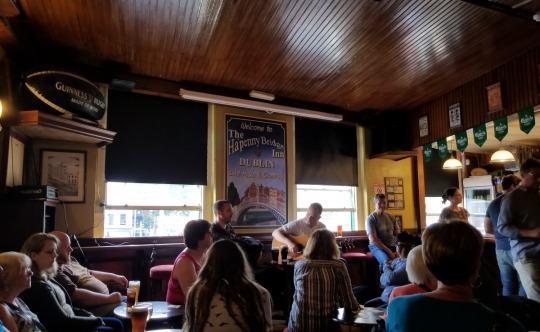
Today we stayed in Dublin to see some of the city’s highlights: the Book of Kells at Trinity Collge, the Irish National Gallery, and--perhaps best of all--the city’s thriving pub music culture.
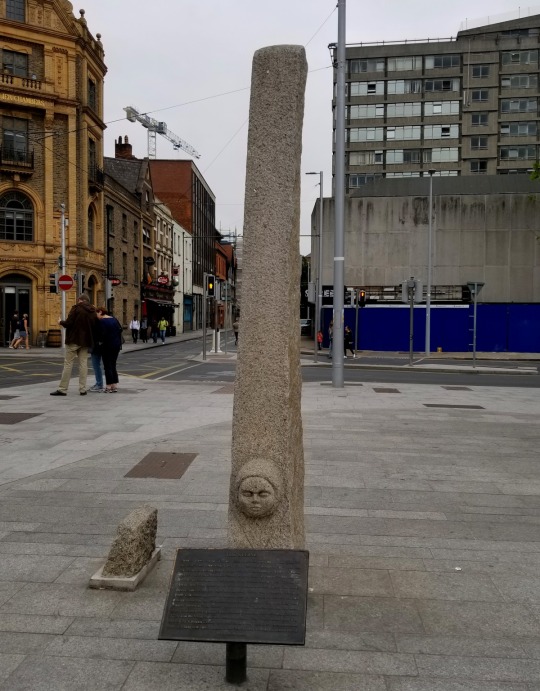
On our way to Trinity College, we passed by an odd-looking stone pillar with a creepy moon face at its base. The Steine is a replica that marks the spot where a colony of Viking invaders erected a large standing stone here on the bank of the River Liffey. Which is odd, because the Liffey isn’t even in sight of the Steine.
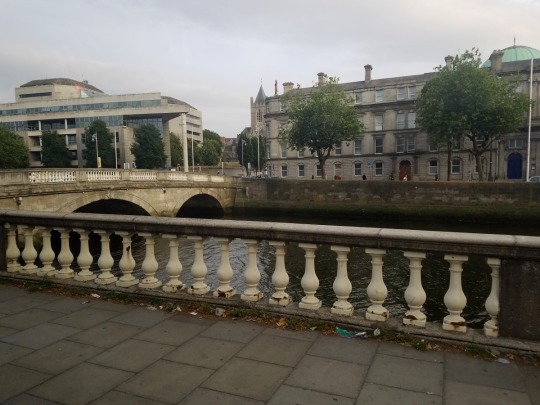
Today, the Liffey runs through Dublin at a respectable 140 feet or so wide. But before a massive land reclamation project that narrowed it in the early 1700s, it was many times larger. The Steine, which marked the north bank, is around 300 feet north of the current north bank.
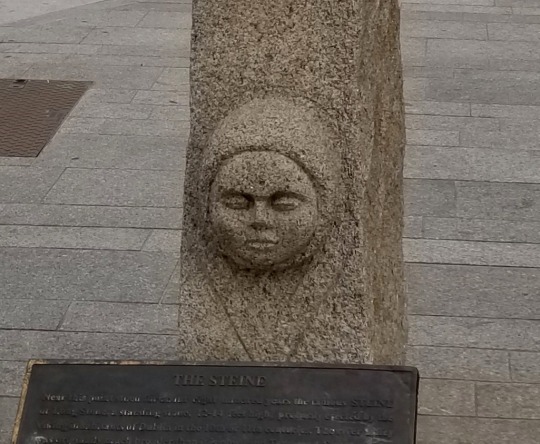
The creepy face is supposed to represent Ivar the Boneless, the Viking lord who founded the dynasty that ruled Dublin and terrorized the rest of Ireland for several centuries before the Normans came and took the job for themselves.


I first heard about the Book of Kells through the animated film The Secret of Kells, which my friend Dustin showed back when it came out in 2009. While the movie is firmly planted in the realm of Studio Ghibli-esque fantasy, the Book of Kells itself is quite real, though only slightly less fantastic.
The book was made by Celtic monks who originally lived on the Scottish holy island of Iona but were forced to flee when Vikings invaded. They eventually settled and built a new monastery in the Irish village of Kells.
More than the dramatic story, however, the Book is famous for the stunningly intricate illustrations that cover almost every page. Some of the Celtic knotwork is so tiny that scholars aren’t exactly sure how it could have been made, given the crudeness of the writing quills and the lack of any magnification devices at the time.
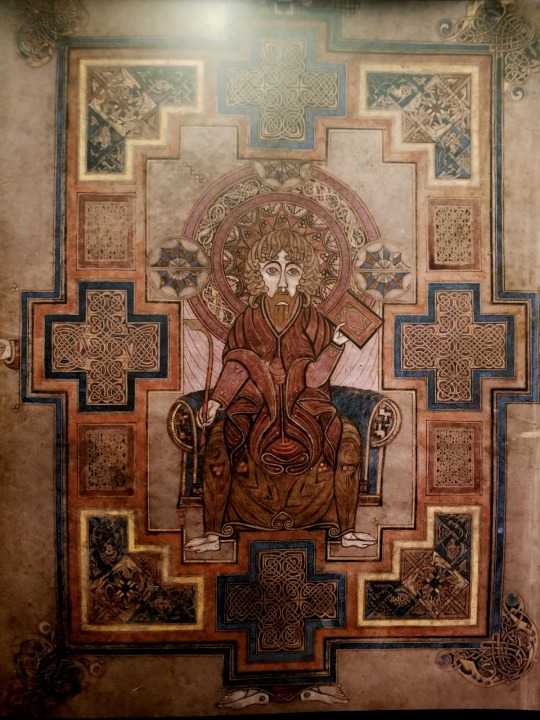

Even blown up to wall-sized proportions, the illustrations are amazingly complex.


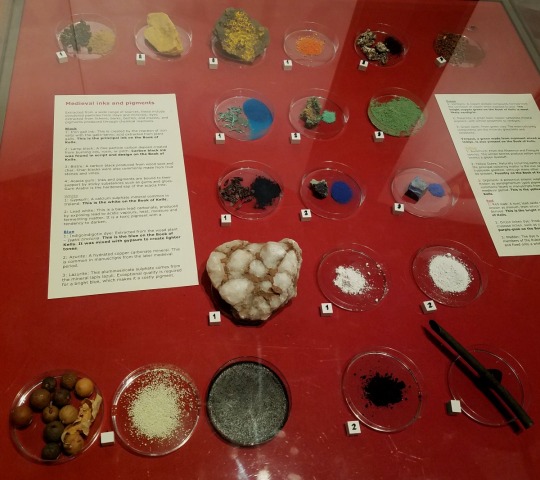
The exhibit starts with some interesting background info on the different types of bibles that monks made, as well as the techniques and materials used to make them.
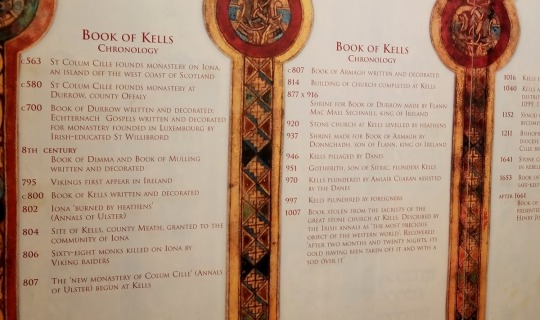
As we learned from a timeline in the exhibit, the Book of Kells has had an adventurous life. In addition to surviving Viking raids, it has also escaped numerous fires and the pillaging of Oliver Cromwell’s armies.
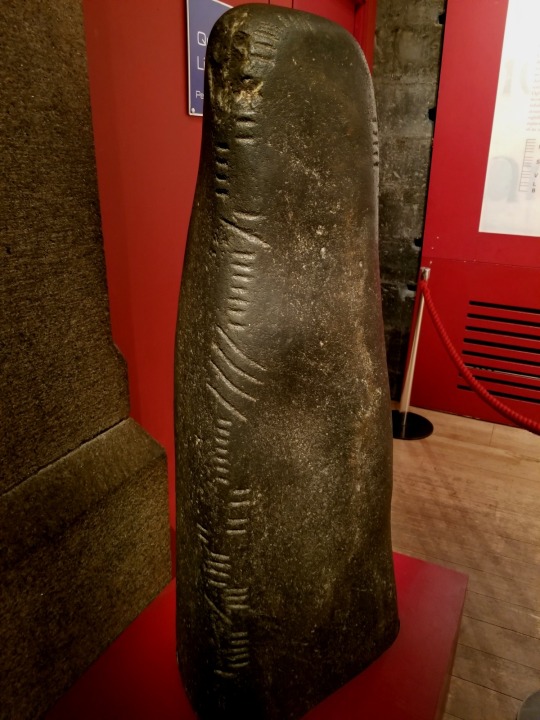
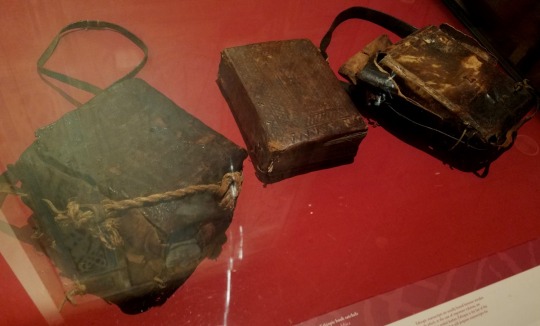
The exhibit also included some other interesting artifacts, including a standing stone with ancient Irish “Ogham” writing on it and a selection of 6th-century “pocket gospels” that were small enough for missionaries to carry in their satchels.
It was all fascinating, but the exhibit was claustrophobically crowded and uncomfortably hot, so we took pictures of all the signs and moved on as quickly as we could.
There was quite a crowd around the books, and in the end it required a bit of shoving and shouldering to get a view. But it was well worth it. The book is currently bound in four volumes--one for each gospel. Two are on display at any given time. One is opened to a full-page illustration, and the other is open to a page of normal (but still impressively penned) text. We got to see the opening illustration of the book of Matthew and a passage from Mark describing the burial of Christ’s body after the crucifixion.
Sadly--though quite understandably--we weren’t able to take any pictures of the book itself.

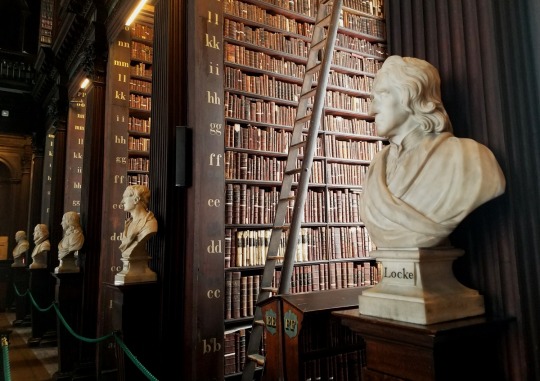
Moving on, the exhibit concludes with Trinity College’s “Long Hall,” a towering library filled with hundreds of thousands of books. It also includes important cultural artifacts like an original copy of the Proclamation of the Irish Republic (Ireland’s early 20th-century declaration of independence from Britain).
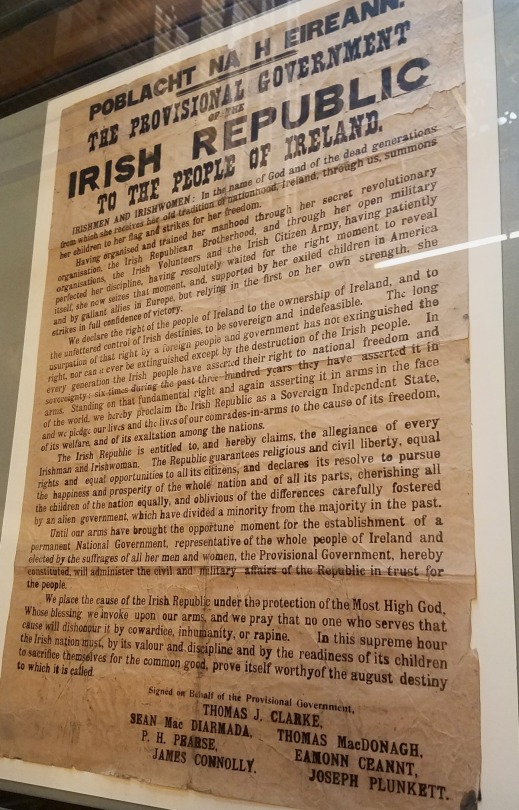
I remember learning stories as a kid that the tiny signatures at the bottom of the US Declaration of Independence may have been written that way because the signers were afraid of personal retaliation by the British. Our founding fathers might not have suffered that fate, but Ireland’s weren’t so lucky. All seven of the signatories named at the bottom of the Proclamation were rounded up and executed as traitors by the British army.

The Long Hall also holds the misnamed “Brian Boru Harp,” a medieval Celtic harp that was used as the model for the modern Irish national emblem. It's also the harp used in the Guinness logo--but mirrored out of respect. Brian Boru was an ancient Irish king who at one point was said to have owned the harp, but scholars have long since determined that there is no possible connection whatsoever.
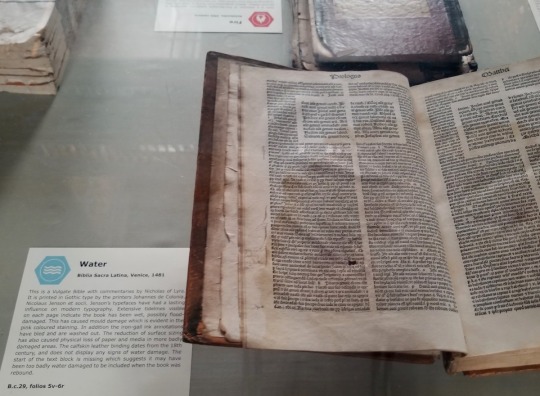

The hall also included a series of displays on the importance and complexity of preserving old books. Specifically, it demonstrates this by showing off dozens of real books that have been ruined in various ways--fire, water, light exposure, dust, pests, etc.
Next, we went to the Irish National Gallery. It is admittedly not as impressive as many of the other galleries we’ve visited, but it's still worth visiting if you’re at all interested in art (or things that are free).
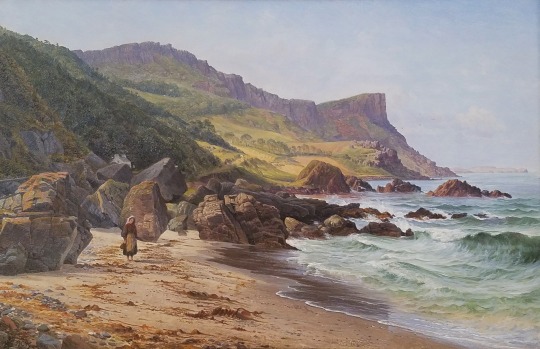

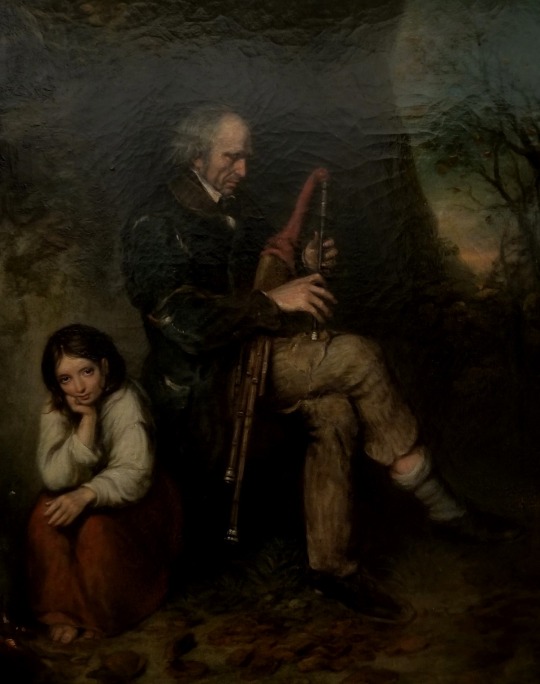
The first floor is filled with works by Irish painters that you’ve probably never heard of despite being just as good as many of their continental contemporaries. The works mainly focus on landscapes and portraits, so that’s a plus if you’re into either of them.
There is a small room dedicated to the works of Jack Yeats, the younger brother of the poet W. B. Yeats. The room shows the evolution of his distinctive artistic style over the course of his career. Photos weren’t allowed in this room, but I made a point to snap some pictures in the gift shop.

The middle floor houses the Irish national portrait gallery (which we skipped), and the top floor focuses on works from the rest of Europe. Jessica noticed a painting from across the room that immediately reminded us of the sculpture of Laocoön in the Vatican (which has followed us around ever since).

When we walked up to read the placard, it actually mentioned the Laocoön statue by name as a reference used by the artist for this painting.
Jessica and I have been continuously amazed by how many connections like this we are able to make now, especially because we’re seeing things so close together. If we’d gone to Rome on one trip and to Dublin on another trip years later, I don’t know if we would have even stopped to look at this painting, much less made the connection.

We also couldn’t help noticing that the gallery had the most extraordinarily large elevator of any museum we’ve visited.
We had a couple hours to kill before our evening musical pub crawl, but since it had been a pretty long day already, we decided to head over early and relax with some refreshing pints of cider.
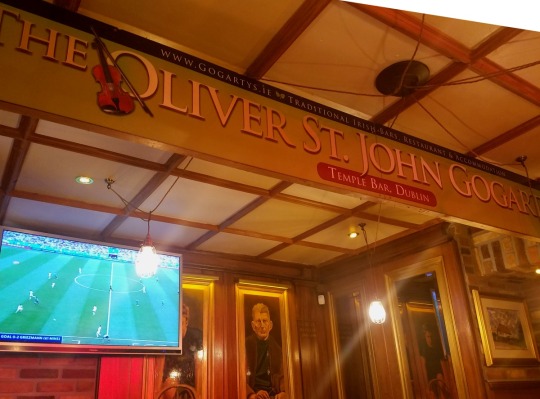
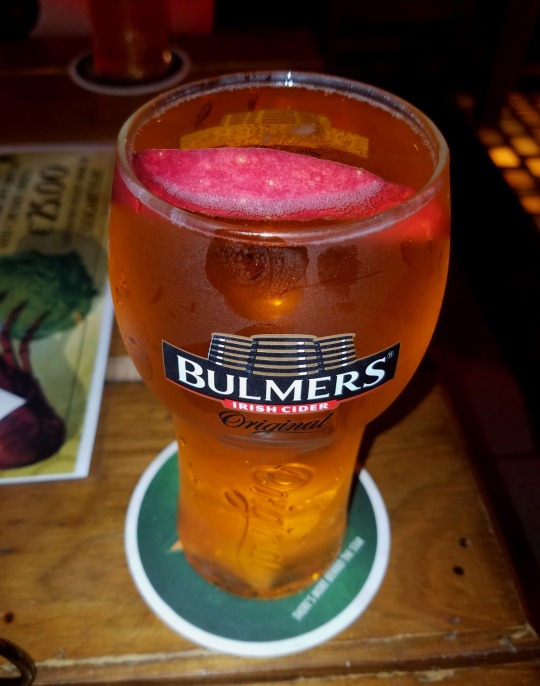
The tour was lead by two local musicians who used to play together years ago and were paired together for the first time since. They had great chemistry and repeatedly told us just how lucky we were to be enjoying their “reunion tour.”
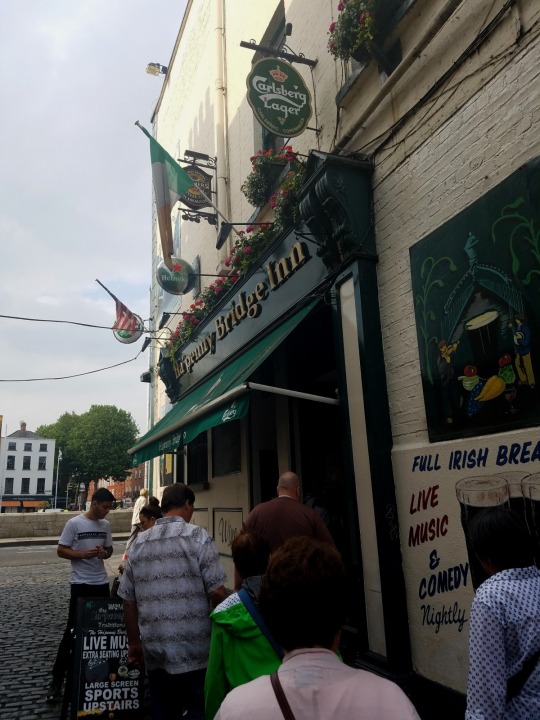
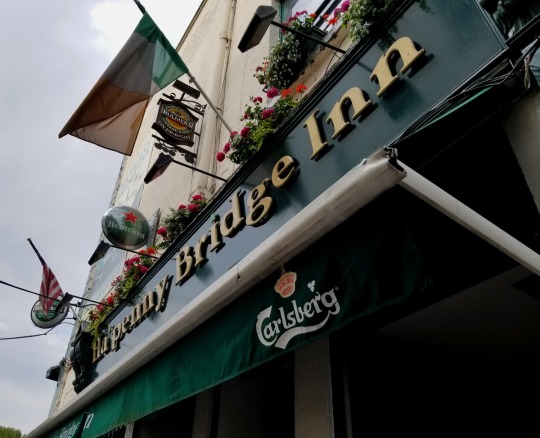
After the introductions and a half-pint, we left the Oliver St. John Gogarty and headed over to our next pub, the Ha’Penny Inn, named for the nearby Ha’Penny Bridge, which originally cost half a penny to cross.

The tour was a delightful mix of performance, education, sing-along, and drink. One thing we learned was that Irish folk songs can be divided into jigs and reels--terms that are actually borrowed from the types of dancing that they went with. Jigs are in 6/8 time, fast, lively, and fun. They can tell stories about young love, drinking, or--preferably--both. Reels are in 4/4 time, slower, and generally deal with lost love, death, or--preferably--both.
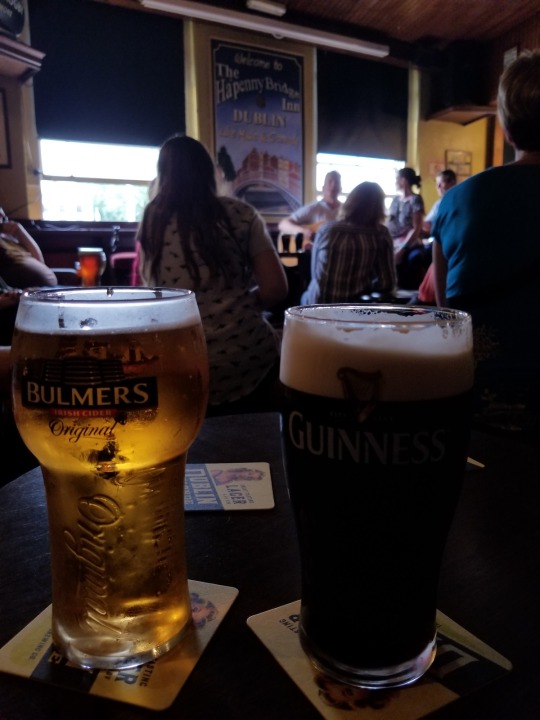
We learned that both the music and the dance go back millennia, to Ireland’s Celtic roots. The Celts actually originated in continental Europe and at one time spanned from Britain and Ireland all the way down into Spain. The Romans wiped the Celts off of the continent, and the Anglo-Saxons drove them out of England into the fringes of Wales and Scotland. Only Ireland remained as a relatively unpolluted bastion of Celtic culture well into the High Middle Ages.
Sadly, the specific origins of their various arts and traditions have been forgotten. As our musical guides said, the Irish have always been better at making stuff up than at writing it down.
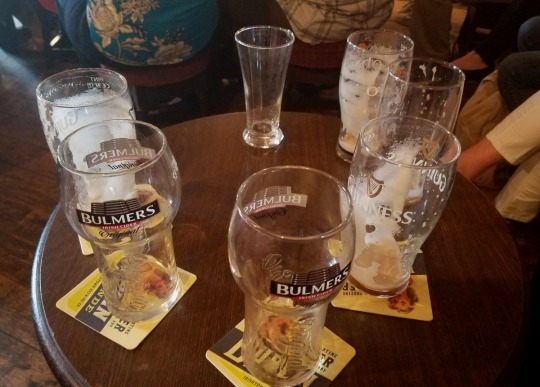
There are hundreds of pubs in Dublin, and pretty much all of them have live bands or recorded music playing day and night. But if you want to see some real traditional music, you need to look for a “session.” On certain nights, various pubs will open their stage for local musicians to show up with their instruments and just have fun playing with each other.


Leaving the Ha’Penny, we made our way to the last pub of the night. On the way, we saw the iconic Dublin spire--which locals joke was built to remind drunk Irishmen which side of the Liffey they’re on when they stumble out of a pub--and a statue of two ladies that the locals lovingly refer to as the Hags with the Bags.
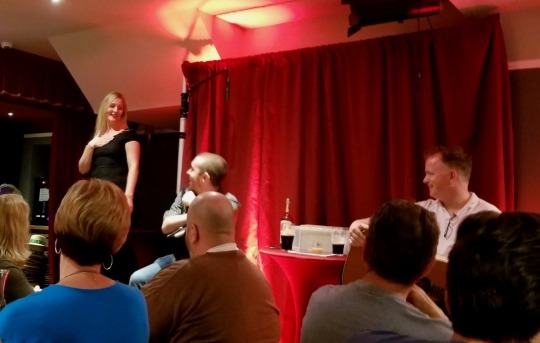
The evening concluded with dinner and a performance from a great Irish stepdancer--both on her own and together with the musicians. We learned that the music and dance were always considered a single art form in Celtic culture. Only recently have they become seen as separate types of performance.

Dinner was fantastic, and we enjoyed talking with several couples about our various travel plans and experiences.
Afterward, our guides gave some recommendations for pubs where we could see a session--The Cobblestone was their highest recommendation--but Jessica and I had had a long day and plenty to drink already, so we headed half-reluctantly back home to bed.
Next Post: Kilmainham Gaol and the National Museum of Archaeology
Last Post: Blarney and Cashel–the Real Rock Stars of Ireland
#180abroad#dublin#ireland#travel#book of kells#celtic#art#history#museum#music#dancing#pub crawl#tradition
0 notes
Text
European Grandeur (8 Nights)
INR 119999 per person on twin sharing (Valid till Aug 18)
Get Value Pack worth Rs. 25,500/- in Rs. 14,999/-
Mt Jungfraujoch with Interlaken City Tour
Mt Titlis with Ice Flyer Ride & Lucerne City Tour
Paris Illumination Tour
This slideshow requires JavaScript.
Europe tops the wishful list of travelers all round the globe. It’s certainly one of the most beautiful, magical and the most romantic destinations. Visit the City of Love- Paris & later the world famous Switzerland, which offers unmatched panoramic delights with its picture perfect landscapes anywhere you turn your head. Art and culture lovers, visit Italy, the most intriguing destination. Have a lifetime trip at Europe.
Inclusions
Cost of your Round trip Economy class Airfare valid for the duration of the Tour
Airport taxes as per the routing of the Tour
2 Nights accommodation in Paris (BEST WESTERN / Ibis Paris CDG Airport / Park Inn by Radisson Paris CDG Airport Hotel / Hotel Novotel Noisy le Grand / OnlySuites / Similar*)
Guided Paris City Tour
Eiffel Tower 2nd Level / Montparnasse
Seine River Cruise
3 Nights accommodation in Switzerland (Hotel ibis Styles / NH Zurich Airport / Novotel Zurich Airport Messe / Hotel Terrace / Hotel Central / Park Inn by Radisson Zurich Airport / Similar*)
1 Night accommodation in Venice / Padova (Crowne Plaza / Park Hotel Villa Fiorita / Best Western Airvenice / Hotel NH Padova / Hotel SB Padua / Similar*)
Venice City tour
Excursion to Pisa
1 Night accommodation in Florence / Pisa (The Gate Hotel / Nord Florence / Hotel Delta Florence / Tower Inn Pisa Valdera / Similar*)
1 Night accommodation in Rome (Hotel Selene Roma / Hotel Arcadia / Idea Hotel Roma Cinecittà / Hotel Mercure Roma West / Best Western Hotel Roma Tor Vergata / Similar*)
Guided Rome City tour + Vatican tour
Cost of the Visa
Services of Tour Manager or Local Representatives
Meals (Breakfast & Dinner), Coach Tours, Transfers, Entrance fees, Sightseeing and Surface Transportation as mentioned in the Itinerary
Cost of Overseas Travel Insurance policy valid for the tour (Passengers above 59 years of age will have to pay the actual difference of the Insurance premium along with the Medical Reports)
All Tours & Transfers on Seat In Coach (shared) Basis
All Hotel & Airlines taxes
Tip
Exclusions
Any increase in the Air fare, Fuel surcharge and Taxes charged by the Airlines on your Air Ticket
Any increase in the Rate of Exchange leading to an increase in all Land Arrangement which may come into effect prior to Departure
Cost of extension of the Validity or Deviation from route of your Air Ticket
Cost of the Additional Suggested Excursions
Porterage, Laundry, Wines, Mineral water, Telephone charges, All items of personal nature and also Food & Drinks not forming part of the Group Menus
Any Service not mentioned in Inclusions
Surcharge (if Any)
Day 1: Welcome to ParisWelcome to the most romantic city in the world! On arrival, you will be met with our local representative at the airport, outside the customs area. After your pick up from the airport, you will proceed to a carefully chosen Indian restaurant for dinner. After the dinner, you will check in to the hotel.
Overnight stay at the hotel in Paris. (Dinner)
Day 2: Sightseeing tour, Optional Lido Show
Sightseeing tour includes- City tour of Paris + Seine River Cruise + Tour of Eiffel Tower After a sumptuous breakfast at the hotel, we will proceed to visit the most famous landmark of Paris – the magnificent Eiffel Tower. We will get a bird’s eye view of the beautiful Paris from an impressive height of 377 feet, from the second level of Eiffel Tower. After this, we will go for a magical river cruise of the Seine River. After this invigorating cruise, we will begin our city tour of this historic city, exploring Paris and all its iconic and glorious sights! We will visit Champs Elysees, one of the most famous and glamorous boulevards in the whole world, with iconic stores and impossibly beautiful cafes lining the street. We will visit the wonderful opera, the gorgeous Town Hall and the National Assembly, we will see the famous Louvre museum (from the outside), the legendary Notre Dam cathedral and the Arc De Triomphe.
After a lavish dinner, we will proceed back to the hotel, or you can choose to watch the Lido show- one of the most famous and long running shows in Paris (at an extra cost). With exotic, glamorous dancers, beautiful setting, foot tapping music, scintillating costumes and a beautifully racy atmosphere, this promises to be the quintessential night out in the most dazzling city in the world! You will be taken to the hotel after the show.
Overnight stay at the hotel in Paris. (Breakfast + Dinner)
Day 3: Paris – Zurich (9 Hrs Drive)After a hearty continental breakfast, we will check out from our hotel and proceed to Zurich in a coach. The scintillating beauty of the Swizz Alps, the pristine lakes, quaint farms with cows dotting the greenery and breathtaking scenery giving us company, this journey promises to be a soul stirring experience. We will have dinner in a brilliant Indian restaurant in Zurich before checking into our hotel.
Overnight stay at the hotel in Switzerland. (Breakfast + Dinner)
Day 4: Day Free at Leisure OR Optional tourFree Day for Exploration OR Optional Excursion to Mt Jungfraujoch with Tour of Interlaken City (at an extra cost) After a sumptuous and hearty breakfast, you are free to spend the day as you deem fit. You can laze around in the bed, or just marinate in the beauty if arguably the most beautiful city in the world!
OR
We can immerse ourselves in the beauty of the Alps, and visit Jungfraujoch and the Interlaken at an extra cost. We will drive through the exquisitely picturesque views to Grund/Lauterbrunnen, from where we will board a train to take us to Jungfraujoch. The train ride in itself is uniquely pleasing, as it takes us from twists and turns and tunnels and mountain passes in the great Alps, to the Jungfraujoch station, the highest altitude station in all of Europe at 11,333 feet. Get enchanted with the magic of the Alps at the Sphinx Terrace, see the stunning views from Jungfrau Peak, and watch the remarkable Aletsch Glacier. We will also visit the spectacular Ice Palace, where we can see incredible ice sculptures, while incased in ice ourselves! The whole experience of ice and snow on the plateau is unforgettable and quite surreal. We can send postcards to our friends and family from here, the highest altitude post office in all of Europe. You can enjoy a brilliant lunch at an Indian restaurant in Jungfraujoch on your own. We will return via the Interlaken City. You will have free time at your disposal here, to roam, shop for the famous Swiss chocolates, Swiss watches and other memorabilia, or simply explore the beautiful cafes here. From here, we will proceed to the hotel after having Dinner at Indian restaurant.
Overnight stay at the hotel in Switzerland. (Breakfast + Dinner)
Day 5: Day Free at Leisure OR Optional tourFree Day for Exploration OR Optional Excursion to Mt Titlis and Lucerne (at an extra cost) After a brilliant breakfast, you can explore the beauty of Switzerland at your own pace. You can get wowed by the breathtaking views of this paradise on earth, indulge in some shopping, delight in the culinary masterpieces of Switzerland, walk around to take in the stunning surroundings or ride in the public transport system. You are free to relax and enjoy the city on your own.
OR
We would recommend a full day excursion to Mount Titlis with Ice Flyer, the famous cable cars to reach the top of Mount Titlis, and the fantastic Lucerne City tour (at an extra cost). At 10,000 feet above the sea level, Mount Titlis is the highest peak in Central Switzerland, affording a view which is unmatched by any other peak nearby! We reach the peak by changing three cable cars (ice flyers), with breathtaking views of the majestic Swiss Alps sweeping past us. Once we get to the top, we will get some free time to relax, take in our beautiful surroundings, play with the snow, or relax at the café or visit the Ice Cave.
After spending a few hours in this magical area, in the afternoon, we will proceed to the picturesque Lucerne. We will get to know the city intimately with a city tour, which would take us to the Kapellbruck Bridge and the famous Lion monument. We will get some time here to shop for some famous Swiss memorabilia like Swiss chocolates, Swiss army knives and Swiss watches. Later in the evening return to your hotel after having Dinner at Indian restaurant.
Overnight stay at the hotel in Switzerland. (Breakfast + Dinner)
Day 6: Switzerland – Venice (6 Hrs Drive)After a brilliant breakfast at the hotel, we will leave for one of the most exotic, most popular destinations in Europe – Venice, which is a delight like no other. On reaching this beautiful place, we will check in to our hotel and relax. Later you may proceed for exploring nearby places in this fantastic city (on your own). Later, we will dine at a lovingly selected Indian restaurant, after which we will drive back to our hotel.
Overnight stay at the hotel in Venice / Padova. (Breakfast + Dinner)
Day 7: Venice – Pisa – FlorenceVenice City tour + Orientation tour of Pisa After a delightful breakfast at the hotel, we will checkout from the hotel and with full of excitement proceed for tour of this fantastic city. Steeped in history, this city has a lot to offer. We will see St Marks’ Square, Doge’s Palace, the prisons of Venice, the utterly romantic bridge of sighs, the clock tower, and the most church this city boasts of, St. Marks Basilica. Later we’ll drive to the city of wonders- Pisa. We will begin with a tour of “The Field of Miracles and Dreams” which happens to be one of the most famous places in the world. This whole square will charm your senses as its lush greenery hosts the leaning Tower of Pisa, the Camposanto, the Duomo and the Baptistery. The whole square is a UNESCO World Heritage Site. After spending time at the beautiful places we will dine at a lovingly selected Indian restaurant, after which we will drive to our hotel for Check in.
Overnight stay at the hotel in Florence / Pisa. (Breakfast + Dinner)
Day 8: Florence – Rome (5 Hours Drive)Tour of Rome + Tour of Vatican City After a pleasant breakfast at the hotel, we will check out and proceed to the beautiful, historic city of Rome. As the saying goes, Rome wasn’t built in a day, and the sights and sheer magnitude of the architecture tells us why! After checking into our hotel in Rome, we will set out to tour this brilliant city, and the Vatican City, the seat of the Catholic Church, and home of the pope. Vatican also happens to be the smallest country, but with one of the richest art collection in the world! During the course of the day, we will get to see Piazza Venezia in the very heart of the city, Victor Emmanuel II monument, the hugely popular coliseum, St. Peter’s Basilica, and myriad other historic buildings. We will have dinner at a carefully chosen Indian restaurant, before heading back to the hotel.
Overnight stay at the hotel in Rome. (Breakfast + Dinner)
Day 9: Return Home with Wonderful MemoriesAfter a delightful breakfast, we will check out from the hotel and drive to the airport for our flight to return home. It is time to say goodbye to the beautiful, exciting Europe and the friends we have made, and go back home with the indelible memories we have created. With the memories, experiences and photographs of a lifetime, this Euro trip will draw to an end. We would love to hear your stories, and your feedback. Please write to us with anything you would want to share with us, as this keeps us motivated in our effort to provide beautiful holiday experiences to our guests. (Breakfast)
Tentative ItineraryNote: Above Itinerary is just indicative. Do not consider it as a Final Schedule. Date & Time of Tours can be changed by Local Agent / Tour Operator.
Feel Free to contact for any customized packages at:
Mobile: +91 9343369109 WhatsApp No.: +91 9986858009
Website: http://the-travel-cube.business.site/ https://thetravelcube.wordpress.com/
Mail at: [email protected]
European Grandeur (8 Nights) European Grandeur (8 Nights) INR 119999 per person on twin sharing (Valid till Aug 18) Get Value Pack worth Rs.
0 notes
Photo

New Post has been published on http://www.buildercar.com/repeatedly-crossing-europe-in-a-1973-plymouth-roadrunner/
Repeatedly Crossing Europe in a 1973 Plymouth Roadrunner
A former World Champion AHRA Super Street and NHRA Super Gas drag racer with time on his hands and wanderlust led to the most unlikely outcome of road tripping through Europe in a 1973 Plymouth Roadrunner. Three different times. Al Young didn’t start out thinking he’d joy ride in Europe and former Soviet Bloc countries with a muscle car when he started his quest for a simple project.
The now-retired school teacher from Seattle never liked idle time, especially those three months during the summer students and teachers typically enjoy, which led him to campaign a 1970 Challenger running AHRA and NHRA Northwest division Super Comp, Super Gas, and Super Street. The Challenger started as a drive-to-the-track car, ending up as an 8-second full tube chassis racer over almost 30 years, progressively running faster classes, ending his driving career with an AHRA Super Street World Championship in 1981, and three NHRA Pro ET Division Championships.
With retirement came more idle time, but a plan. He loved his old 1973 Plymouth Sebring Plus daily driver even more than his Challenger. He always wanted to build his own car, a car he knew inside and out, where everything is modified and improved to perform better. Also, he and his wife Vicki wanted to see the USA. As he says, “Driving to national events you never see anything.” When a beat 1973 Satellite became available he put his plan together.
The Original Plan
Vicki and Al wanted to see the USA in a muscle car. Al specifically wanted to take a long road trip following Route 66. His retirement funds were limited, but his imagination wasn’t. The car needed to be bulletproof, with backup for the electronic ignition, fuel delivery; both clutch and electric fans, and the electrical had to be easily accessed, which meant it couldn’t be hiding under the dash. Redundant components and electrical systems would keep repair times to a minimum on the road. Vicki had a couple of requirements of her own. Air conditioning and not a typical hard bench seat were her conditions. Since this wasn’t going to be an all out performance car, Al wanted to stay away from big block, long stroke engines which typically create more heat. Says Al, “It couldn’t be so exotic that I couldn’t find a part in Tulsa.”
The Car
The 1973 Sebring Plus he found in 2007 fit his budget. “It originally cost $500, and I overpaid,” says Al. “It was hammered—a drunk must have liked to hit guardrails with it.” But he could fix the roached parts easier than he could step up for a more expensive alternative. “On a teacher’s salary I didn’t have a lot of money so between parts I had and my own skills I felt I could make it nice,” he says. Al also wanted it to be a Roadrunner clone, and so he started collecting what he needed to begin the three-year process. “Ever since I was a kid I always wanted to build my own car, and this was perfect because it was a heap,” he adds. “I could rebuild it the way I wanted.”
The Engine
Al is quick to say this is not your typical engine buildup. He’s been fast and had quick cars. His Roadrunner would need to be something else. Says Al, “It had to be bullet proof, and my bracket racing really helped. The biggest thing was a solid engine and trans.” He stared with a standard bore 318ci engine he’d pulled out of a Duster 30 years before. “It’s odd to build a motor so that you can’t hurt it, but that will also perform,” he says. The 318 has thicker walls than a 340, making for a sturdy foundation. But he did use 340 iron heads, ported and polished with 2.02 intake and 1.60 exhaust Manley stainless valves by DG Performance. Compression is 9.2:1. He’s running a Comp Cams hydraulic 252H cam with .425 lift and 252 duration. “If I put Harland Sharp rockers in it, what’s going to happen if I break one,” he asks? “A stamped rocker is much easier to fix and I can find a stick welder anywhere.” Intake is an Edelbrock Streetmaster topped with a 600cfm Holley 4160 carb. Says Al, ”Headers were out. You’re going to bottom out somewhere.” So 360 Police Pursuit exhaust manifolds ceramic coated by Performance Coatings handle exiting exhaust, with 2 ½-inch dual exhaust tucked tight and Flowmaster mufflers.
Drivetrain and Suspension
The automatic transmission was custom made by friend Pat Blais of Blais Torqueflites, “The best in biz,” says Al. “We used a 904 instead of 727 because it has less rotating mass with a 2.76 first gear set to it. It’s made into a ‘999’ with Kolene steel plates and Raybestos Hi Energy friction discs.” It’s finished off with a Mopar factory hi-stall converter and a B&M Mega Shifter. With 2 5/8-inch U-joints and an 8¾ Suregrip rear with 323 gears, the rearend is stout. For insurance Al carries extra bearings. All the steering is by Firm Feel out of Vancouver, Washington. Heavy-duty torsion bars, sway bars, and Bilstein shocks take care of the suspension. Says Al, “We actually wore out a set of Bilsteins going thru Albania.” Brakes are factory 11.75-inch drilled discs with factory 11-inch drum brakes in back.
Building
As the Roadrunner came together Al found some Chrysler Crossfire 6-way heated bucket seats, and purchased a Nostalgia Air AC system because it mounts under the dash for easy access. While he banged out or replaced some of the sheetmetal, Skeeters Auto body in Seattle did the final finish and paint. 17- and 18-inch Ion 625 wheels with Hankook V12 Evo tires round out the rolling package. A Champion aluminum radiator and InduraPower lithium ion battery found space under the hood. The redundant systems incorporated into the Plymouth are a switch-controlled ignition and backup ignition, with two MSDs, two coils and two wiring harnesses; electric and mechanical fuel pumps; electrical and mechanical fans; and stock through-the-dash electrical and bypass electrical systems to avoid working upside down under the dash in 100-degree heat.
Rubber Meets the Road
After the Roadrunner was finished, Al hammered it to beat on weak components and fix the bugs. “I raced the car for a year before taking a trip,” says Al. “I blew 200-pounds of nitrous through this motor trying to blow it up.” He admits he was having second thoughts about the 318 block, thinking he might build a 340, so the little 318 was expendable to him. But guess what? This engine is bulletproof. “I was determined to blow the motor up so I continued putting nitrous thru it,” Al says. In the end it has been a reliable engine that Al feels really woke up from the modifications.
Seeing the USA
In 2011 the Young’s and their Roadrunner were ready for a long road trip. “That was my big dream to build something for Route 66,” says Al. “We went down to New Orleans, across the Dakotas, and cut down following the Missouri and Mississippi rivers, eventually tying into Route 66.” Total miles travelled: 8000. Problems were reduced to percolating gas in hot weather, and a melted shift cable nestled too close to the exhaust.
The next year Vicki and Al travelled to a nephew’s wedding in New York from the southern route through Nashville, Montgomery, Atlanta, up to Niagara Falls, before heading home to Seattle. Total miles travelled: 8000.
The third trip in 2013 was 7000 miles down the coast from Seattle and back through Glacier National Park in Montana and British Columbia. “Then we ran out of places to go,” says Al.
Europe or Bust
What would have seemed far-fetched a few years earlier was now being seriously investigated. “Europe sounded great, we had become accomplished road people,” says Al. What seemed like an exciting extension of Al’s original intent to travel Route 66 quickly iced over when he discovered the tab to ship the Roadrunner to Europe. “It costs $11,000, and I just can’t afford that,” says Al. He adds if it weren’t for the cost of shipping, travelling Europe by car is the absolute cheapest way to go. “We ended up going to 34 different countries and I tried to figure how much it would have cost us to fly to 34 countries and it would have been astronomical any other way but driving your own car,” says Al. “Travelling by train you have to live out of a suitcase, but with a 1973 Plymouth trunk big enough to hold five people we never worried and just threw stuff into the trunk.”
The New Plan
When Al was drag racing his sponsor for 30 years was Bardahl. Remember Bardahl? They’re an additive company like STP or Justice Brothers. Still based in Seattle, a determined owner and fights with the Feds over distributorships led to Bardahl reducing US sales to become one of the leading lubricants in over 90 different countries. Many new cars built outside of the US contain Bardahl products. Bardahl founder Ole Bardahl (1902-1989) was inducted into the Motorsports Hall of Fame of America in 2014.
Al contacted Bardahl, ran the idea of driving the Roadrunner throughout Europe stopping at distributorships here and there as a sort-of promotional tour, and guess what? They loved the idea. So Vicki and Al pulled out a map and Bardahl’s list of distributors and put together a proposal for touring Europe in a 1973 Roadrunner muscle car. “We wanted to go to all of these countries and it ended up being 8000 miles,” says Al. “We didn’t even plan on it taking 45 days, either. It just turned out this way to hit all of those countries. Plus my wife didn’t want to spend every day in the car; she wanted to see the Vatican, the Prado Museum in Spain, and places like that.”
Al’s wife is part Scandinavian, and she also wanted to visit where her ancestors were from. It so happens that Sweden is the home of the Power Big Meet, the largest American car show in the world. Like 20,000 cars large! Located in Vasteras, it seemed the perfect blend of cars, culture, and clan. The plan was to fly to Amsterdam, then take the train to where the Roadrunner would be waiting in Rotterdam, Netherlands, the largest port in Europe. At the port they’d load up the Roadrunner, fire it up, and drive off. Shipping would take 45 days, stopping at many US ports from Seattle before going through the Panama Canal, headed for Rotterdam. “I planned it so that in every country there was a distributorship I could stop into or drive by,” says Al.
How Is It Travelling in Europe With a Muscle Car?
“The car was the ticket,” says Al. “When we came into a town it was like the circus was in town. Every hotel wanted us to park in the front, in front of the Lamborghinis; and at every restaurant there was no parking but they made space for us, it was crazy.” Vicki and Al’s safety net was the distributorships in every new country they entered. “I had hosts,” says Al. “Unless you have a reason they won’t let you go to all of these different countries because they suspect you’re going to sell the car and they won’t get their tax. We had to get a Carnet, which is a passport for the car stating the reason why you’re travelling around with this unusual car. Bardahl provided us with the reason for having the car go through all of these countries.
“Most all of the gas in Europe is 100-102 octane so my motor loved it. I’m only running 9.2 compression so the fuel was good, and it usually ran from $7-$9 a gallon. Gas stations were everywhere and very clean, but you do pay a Euro or two to use their restrooms. Rest areas are very clean but not as frequent as in the US. Burger Kings are everywhere, though we always ate local food and it was so good. American companies are everywhere. Everyone was very nice and they always wanted to sit in the car, and were always polite to ask if they can take a picture. It made a lot of peoples’ day and really made our day. In the 21st century it’s the universal language to have a hot rod.
“The small villages are small villages, and the big towns are pretty cosmopolitan. Once you’re past the border, police are always curious about the car. Most of the time they just want to stop you to look at it. In the eastern part of Europe — Bulgaria, Serbia, Poland, the Carnet came in handy because the border guards are still Soviet bloc. With an American muscle car all eyes are diverted to the car and there was never a problem. I’m Asian, so if you look at me to try and figure me out you’d probably be 80-percent wrong, but if you look at my car and try to figure who I am you’d probably be 80-percent right because when you see my car you see my soul. If my car stereotypes me you almost would hit who I am perfectly.”
Our map shows the routes Vicki and Al took, and that’s the other curious thing about this caper, there was more than just a single European trip. The first, in 2014, went so well that Bardahl asked Al if he’d do it again in 2015. “Bardahl asked us again to go — it’s very hard to turn this down,” says Al.
The 2015 Trip
So a second trip was launched for 2015. This one would take Vicki and Al into former Soviet bloc countries which today, just two years later, would be a bit dicier to do. “I didn’t bring a gun, and didn’t bring nitrous with me because they would think it was a bomb,” says Al. “If they saw two 10-pound bottles they’d be running. In all it was really safe driving these three years. Day or night there would always be a crowd around the Roadrunner, so I never worried about theft because it was just too high profile, plus I disarmed the MSDs. Freeways are good, the Autobahn is overcrowded.
There was always the potential for a little drama crossing through former Soviet bloc countries, but luckily “situations” were rare. “As a favor to one of the distributors as we were leaving Serbia I stopped by one of his friend’s residence,” says Al. “There was a car club there, with a Shelby Mustang and some really cool American cars. We made good friends, and as I was leaving one of the guys says we’re about 30 miles from the Hungarian/Serbian border, and if I have any problems just give them his name, Igor Javanovich. I thought it was kind of weird because normally you don’t worry about leaving a country, it’s getting in that might be a problem. So we get to the border and this Soviet bloc guard sternly asks for my papers. He starts asking lots of questions and demands we get out of the car. He wants my insurance card, passport, drivers license, everything. He makes us wait in this office where there’s a woman behind a desk that is just as severe. She kept asking what I wanted, and I told her I was just trying to cross the border. So finally I tell here I know Igor Javanovich, that I was a guest at his house. With that said, she walks out to the border station and there’s some sort of altercation with the other guard. Then she comes back with all of my papers, puts them in my hands, and says, “Go!” I was rescued by hot rodders!”
One More Time
With the success of the second European trip, Bardahl was interested in another in 2016. So were Vicki and Al. Says Al, “We went to the American Speed Fest in Brands Hatch, England; Scandinavian countries, France, and it was just great. We drove a little less at 6800 miles total. In Norway we went to fjords half way up into the country, and it was so beautiful.
“One time we exhibited the car near Paris and it sat right next to a Lamborghini. The crowds are all around the Plymouth and no one is by the Lambo. The locals explained that they like the Plymouth much better because they could work all of their life and never get that Lambo, but work a couple of summers and you could buy a Roadrunner as a teen and blow the doors off of the Lambo. We are so lucky as young people in America to be able to build a car that’s fast. In Belgium it’s a few hundred dollars to race a car, but here for $30 I can take it to Bremerton or Seattle to the racetrack and go as fast as I can go in the quarter-mile all day long. We’re so lucky.”
So are the Young’s. They plan on taking life easy this year, but Al is already talking about more road trips to come. “I love to drive, and Vicki has shown me the world through her knowledge of the great places to visit—she’s the tour guide and I’m just the driver.”
What was the most frequently asked question? Do you know Vin Diesel?
Basque police in northern Spain, getting their questions answered by Al Young during the first trip in 2014. Vicki and Al spent two nights in the cities of Salamanca and Sebastian in Spain, before making their way back to Rotterdam then returning home to Seattle.
With over 20,000 American cars in attendance the 2014 Power Big Meet in Vasteras, Sweden, is the largest car show in the world, and the Young’s were excited to be able to participate. Staying three days, they then headed to the Rostock ferry at the bottom of Sweden headed toward Germany.
Two symbols of American industrial brilliance, a WWII Sherman Firefly tank and Roadrunner muscle car, at the site of the battle at Normandy Beach in France. This museum honoring those who died in one of the bloodiest battles of the war at both Normandy and Omaha Beaches is located not too far from the historic city of Caen.
The coastal roads from Mostar to Dubrovnik in Croatia are easy to traverse and safe, and of course the views are spectacular. This was shot during the Young’s 2015 road trip driving from Italy through Croatia to Albania.
Bundesministerium für Finanzen (BMF) customs agents in Austria checking the Roadrunner out, along with amazement at the expanse of storage available inside of a 1973 Plymouth trunk. Al says most all of the police and border agents were extremely nice and very curious, though some in former Soviet bloc countries could be a bit stern—until he popped the hood.
Near France’s border with Belgium is the city of Lille, with art museums like the Museum of Modern Art just a few minutes away and the Louvre Museum less than ½-hour from Lille. The Roadrunner is displayed at a Bardahl distributorship in Lille in 2014, with the Lamborghini playing second fiddle to American muscle.
A heavy downpour slowing things down a bit just outside of Sofia in Bulgaria, from the 2015 trip. Roads in Bulgaria tend to be bumpy and pot-holed, but most of the sights worth seeing can only be accessed by car. Sofia is the capital of Bulgaria, and is as cosmopolitan as any city in Europe with over 1.25 million population.
Al started with a 318 block for its thicker cylinder walls helping to make for a solid foundation. Note the two MSD boxes, two coils on the firewall, and multiple wiring circuits so if any failures occurred Al could switch to a second component or circuit without roadside repairs.
Source link
0 notes